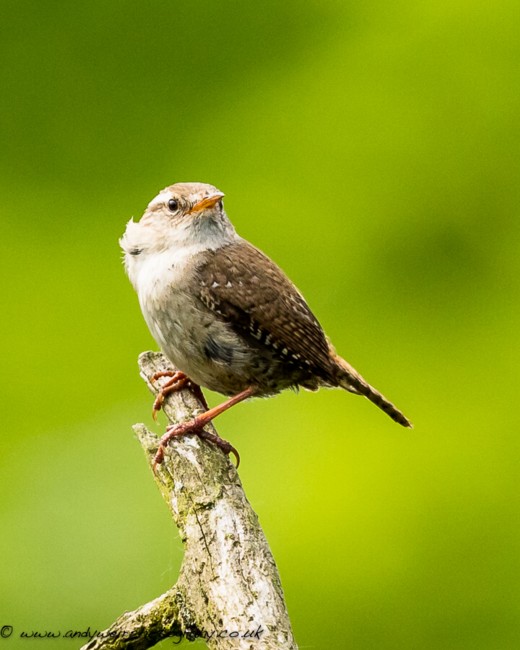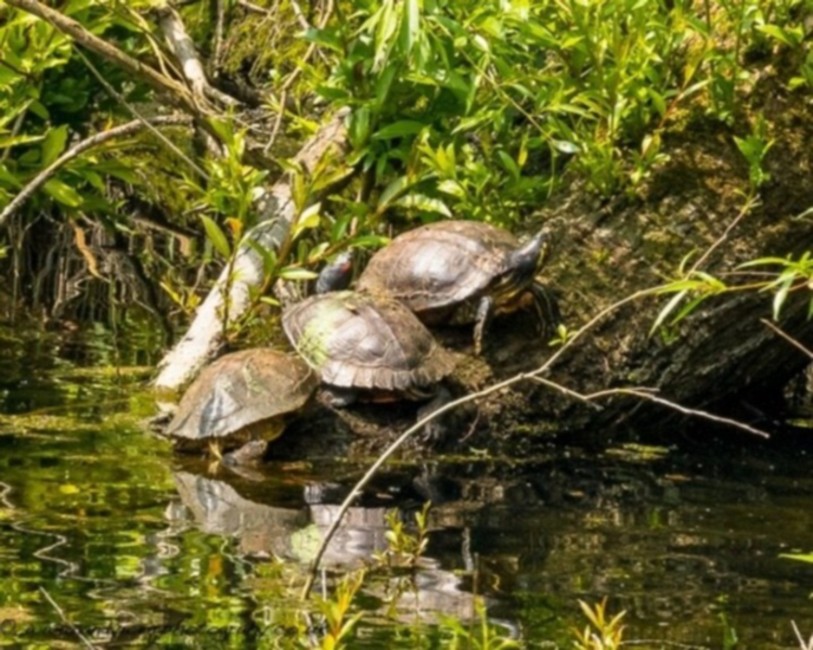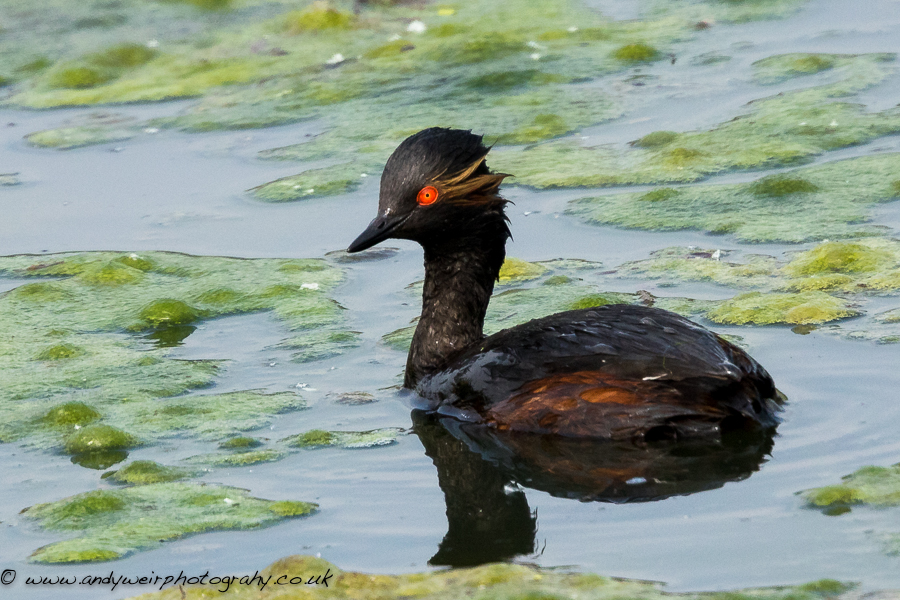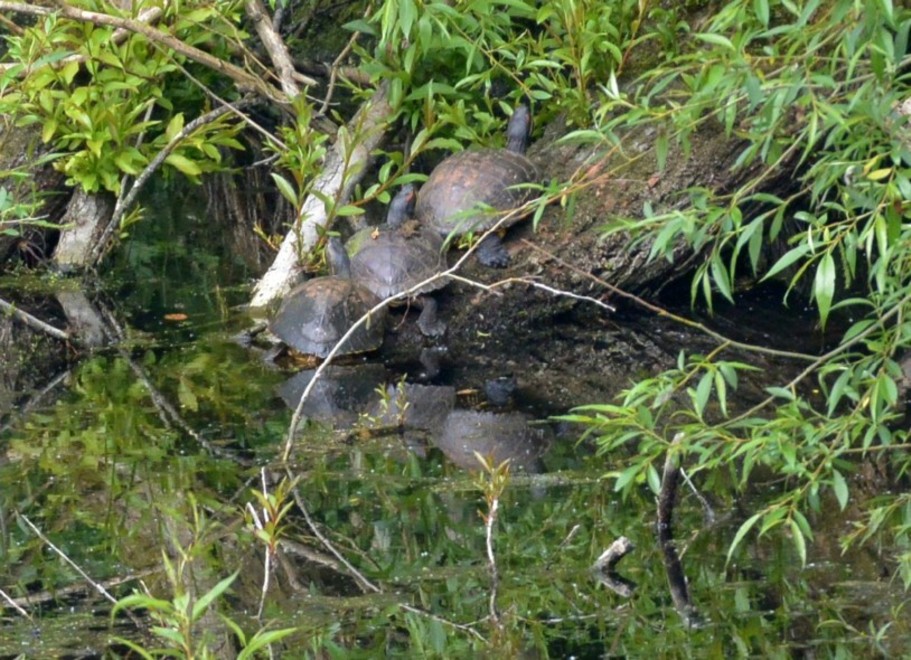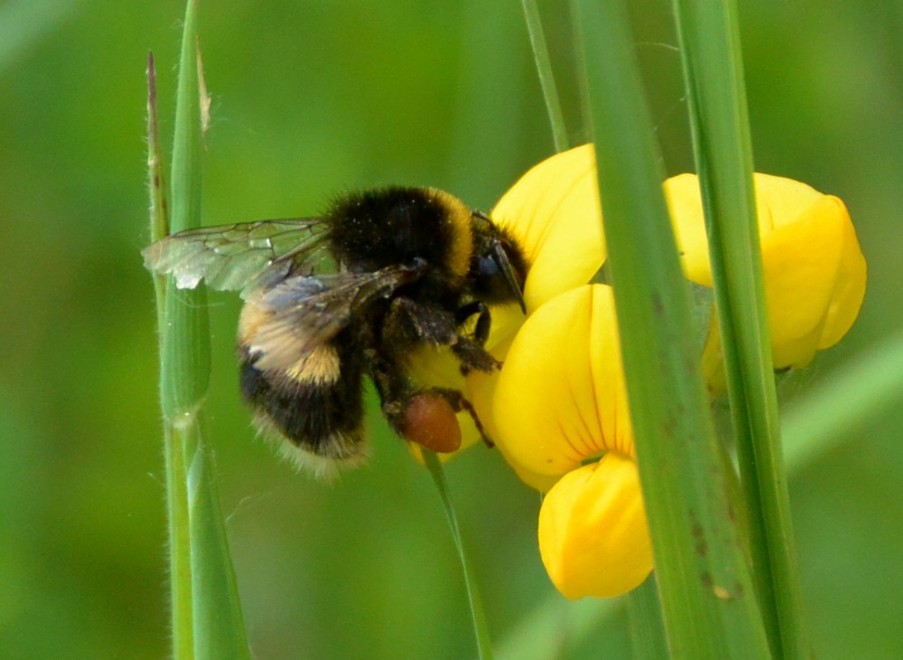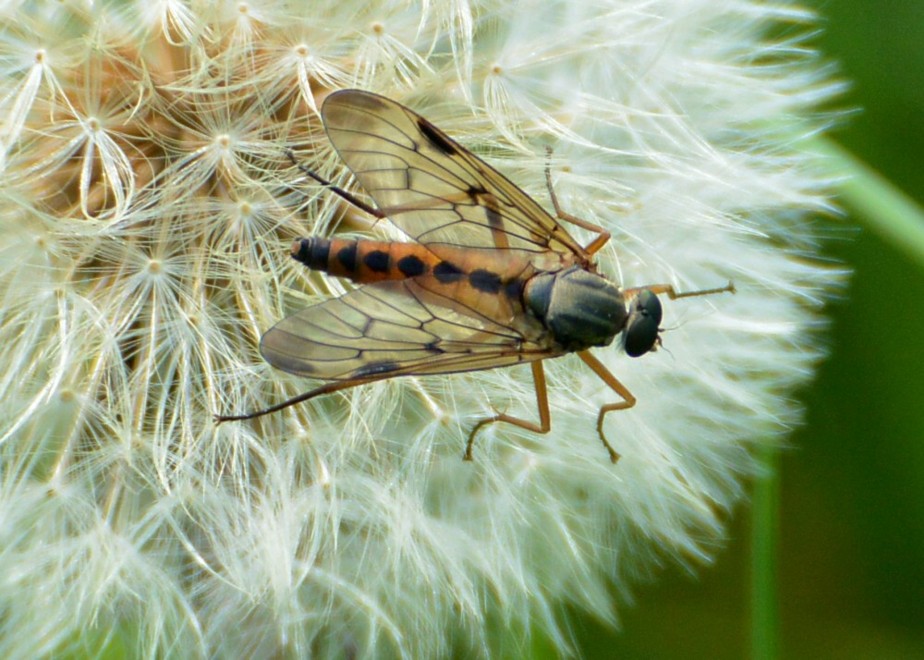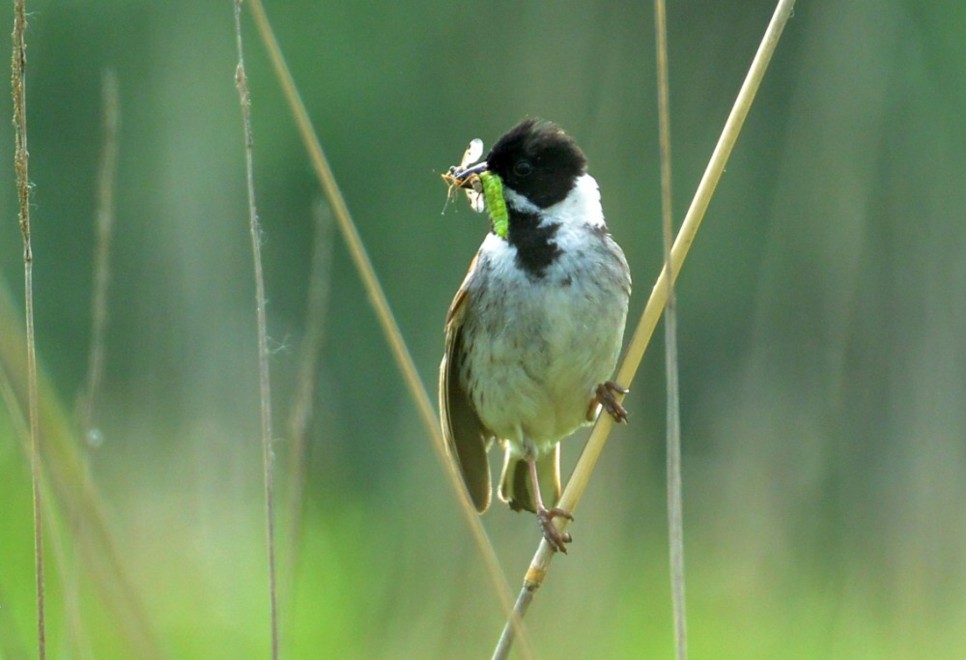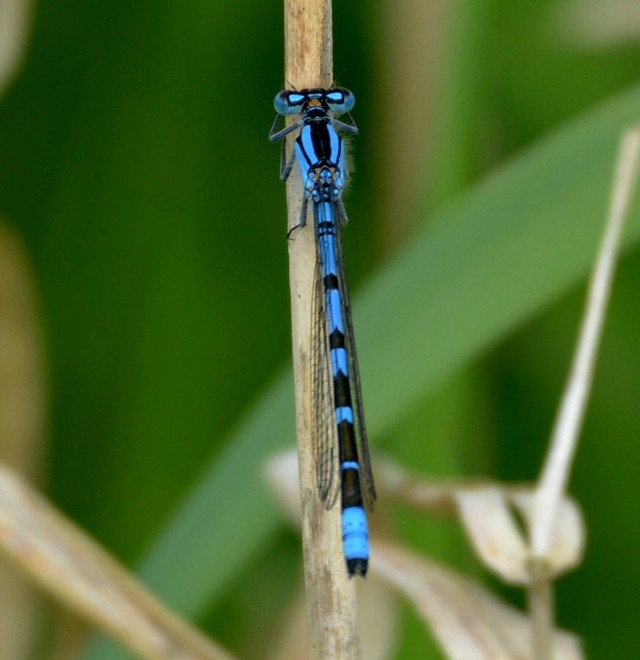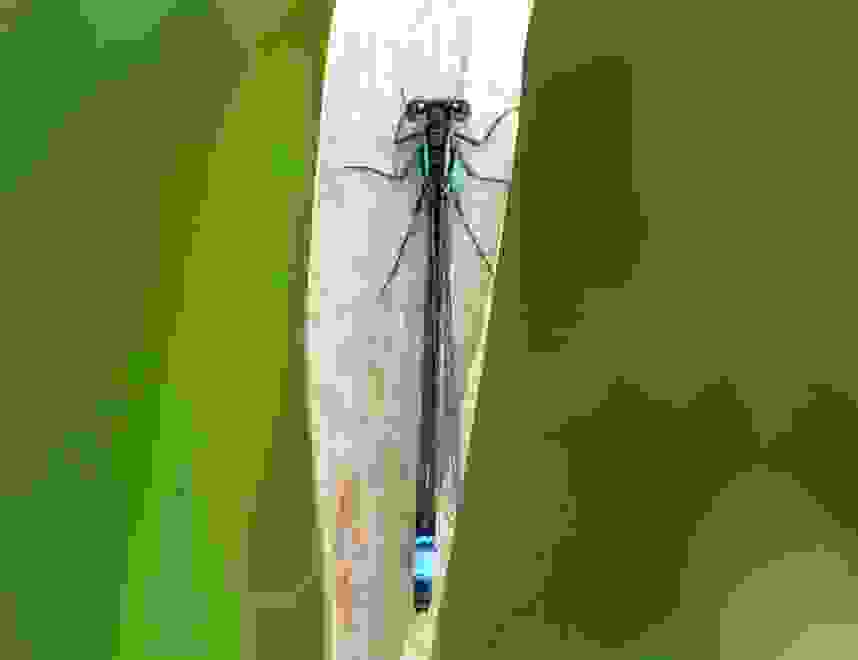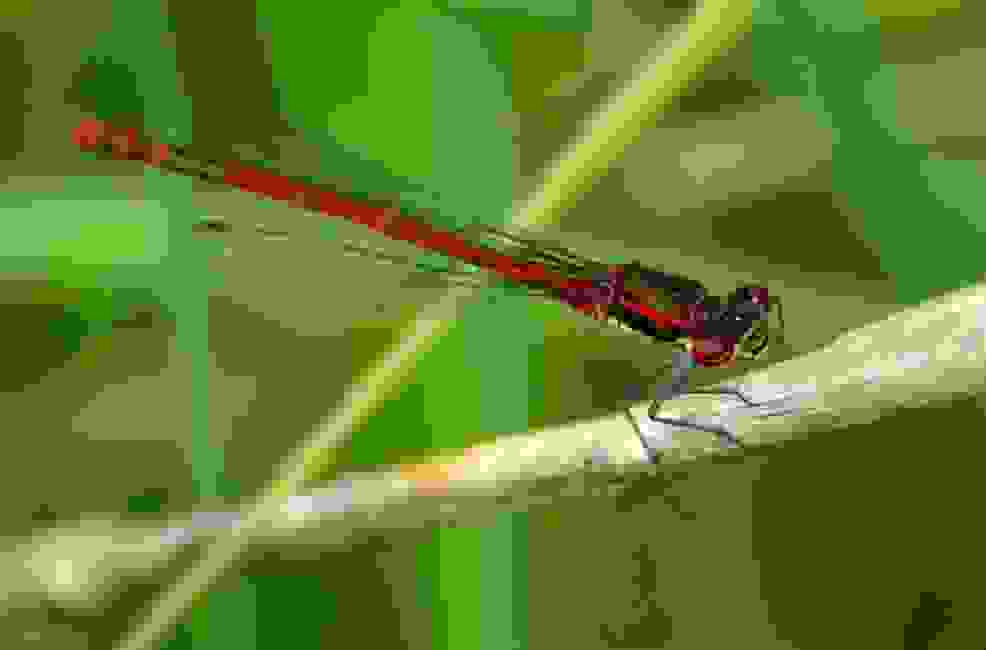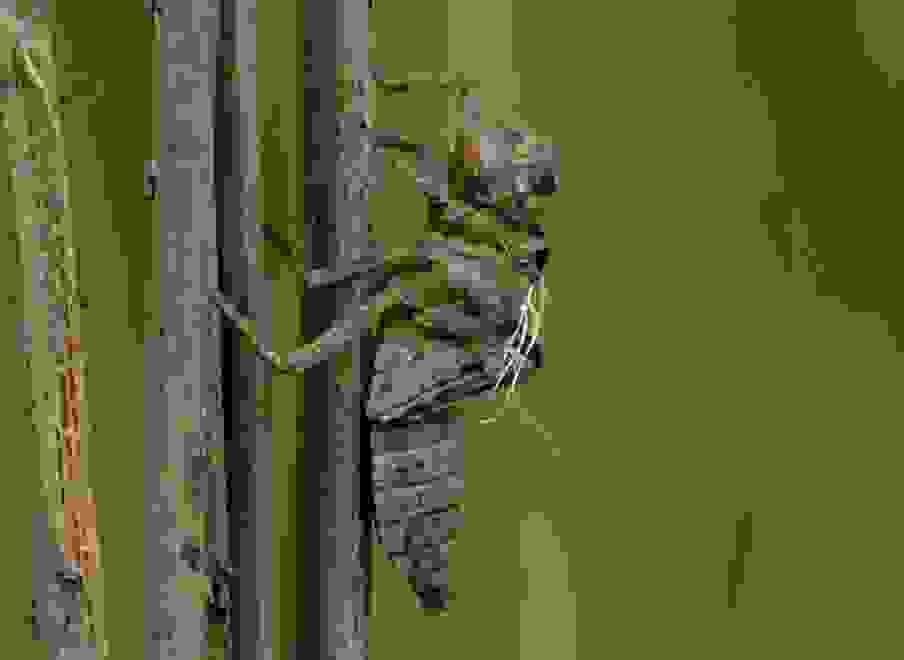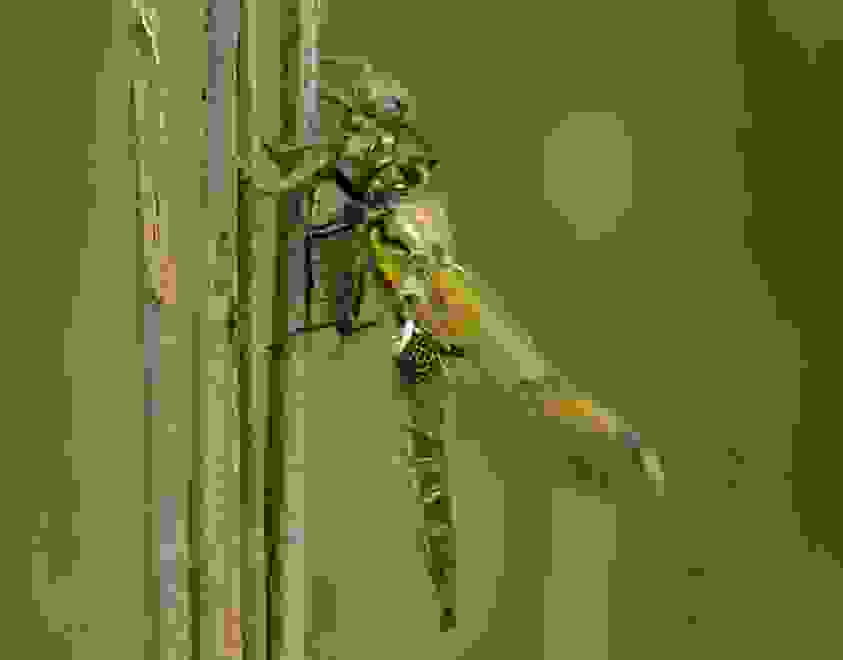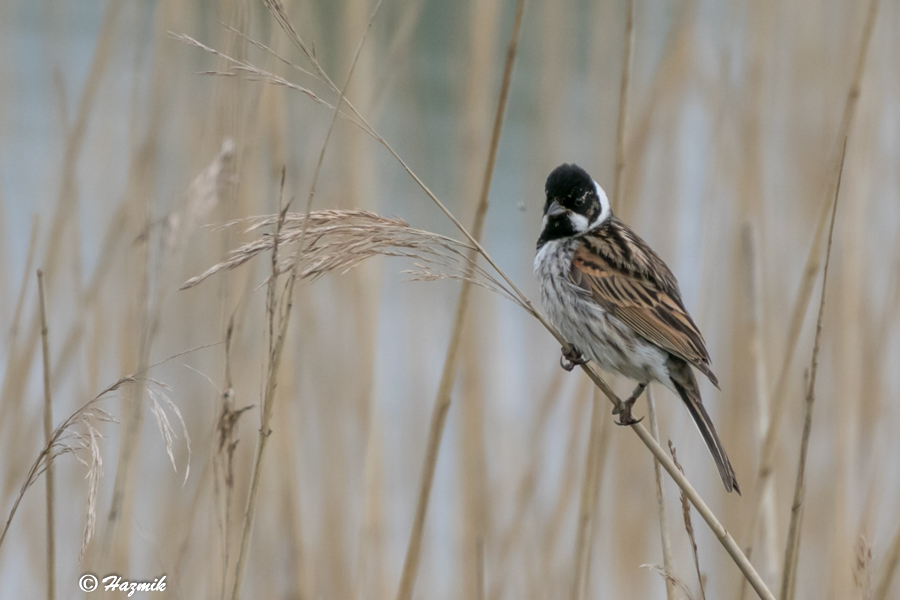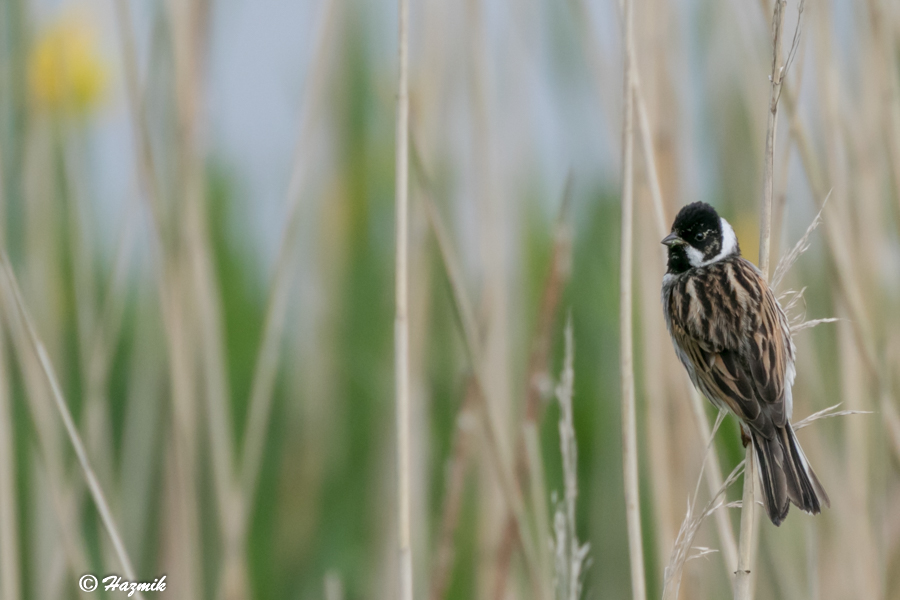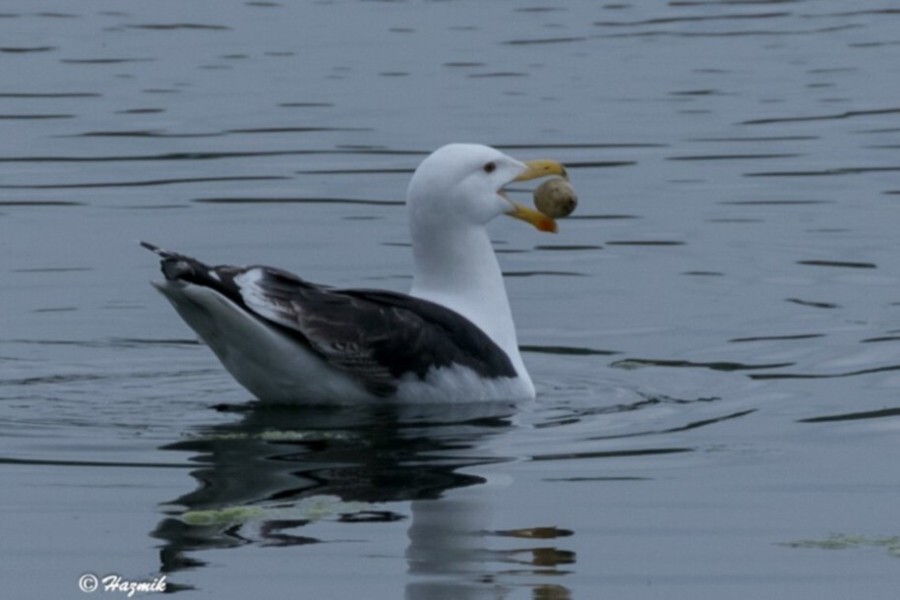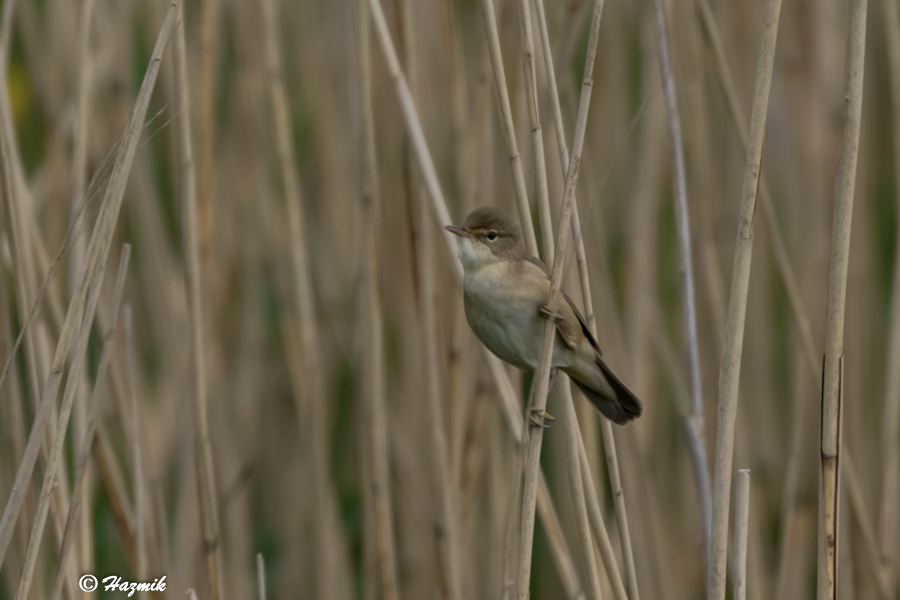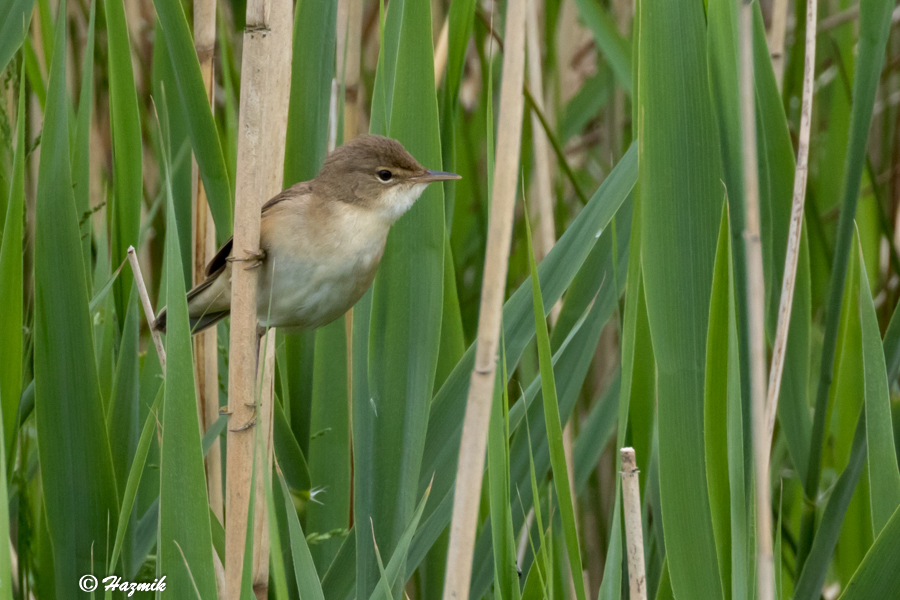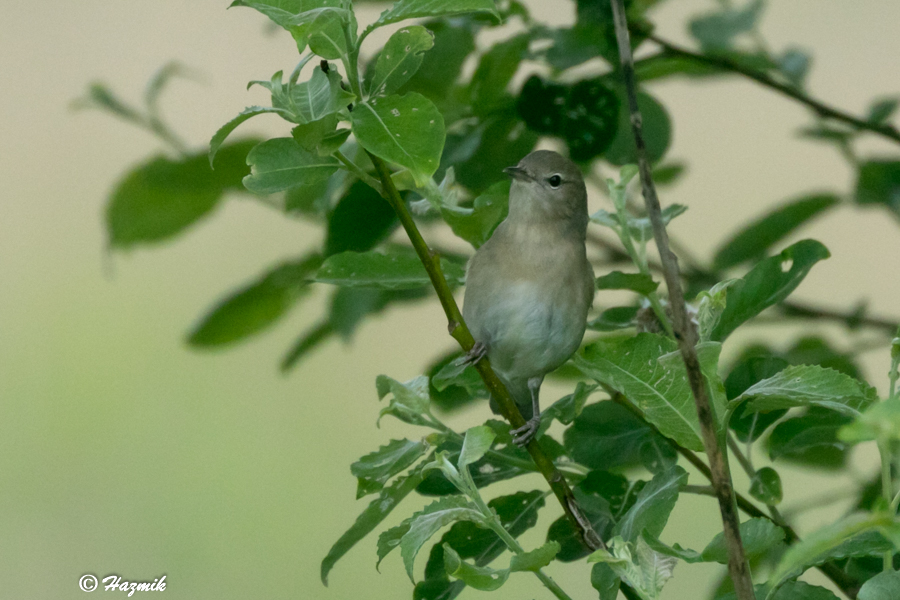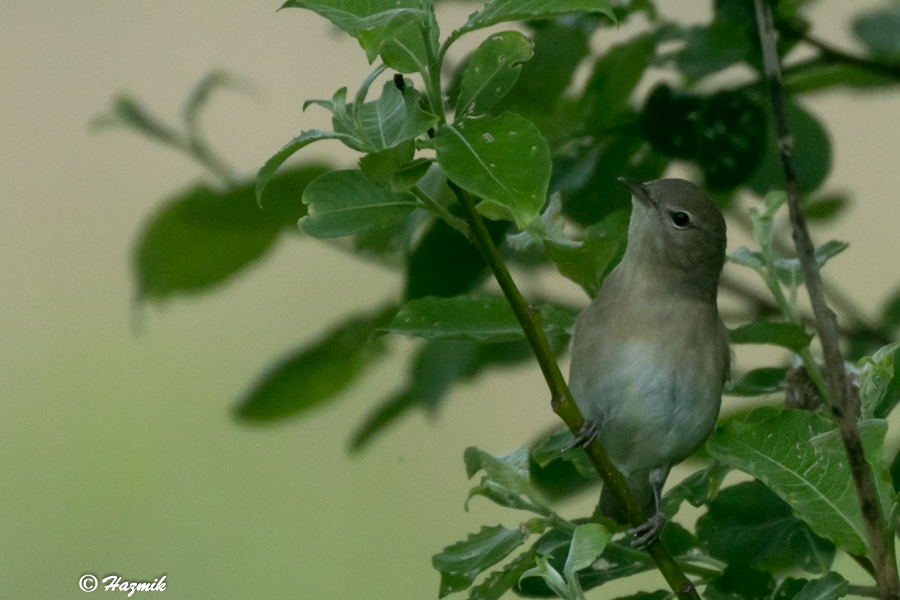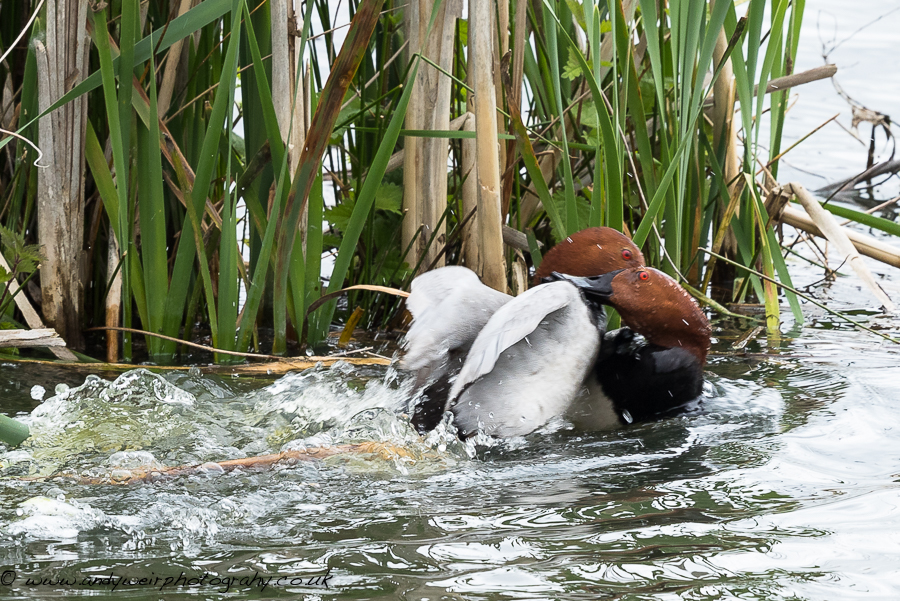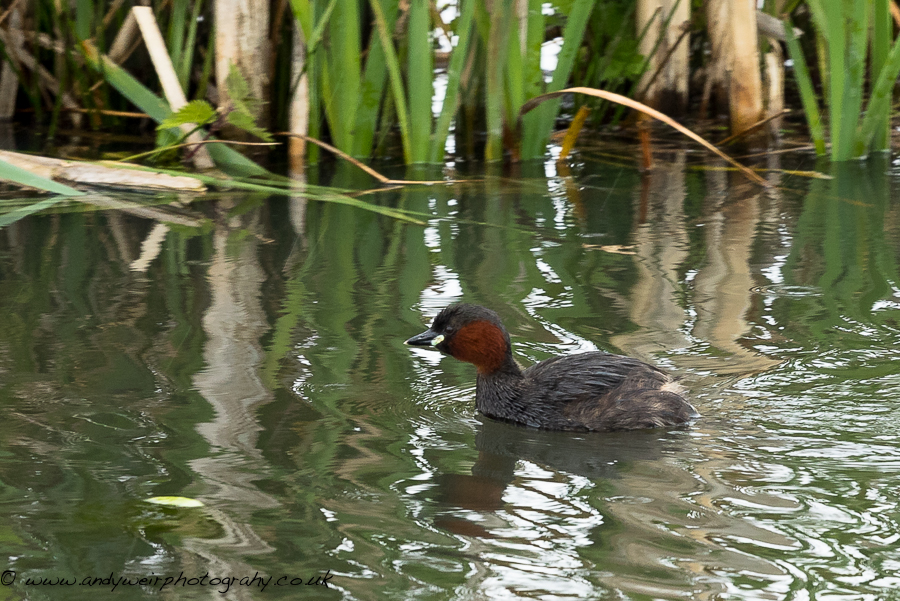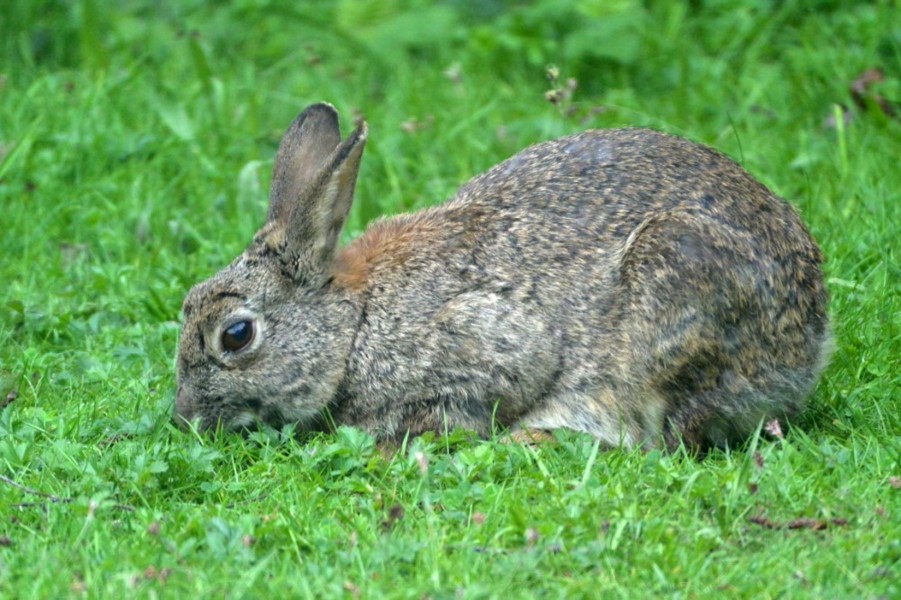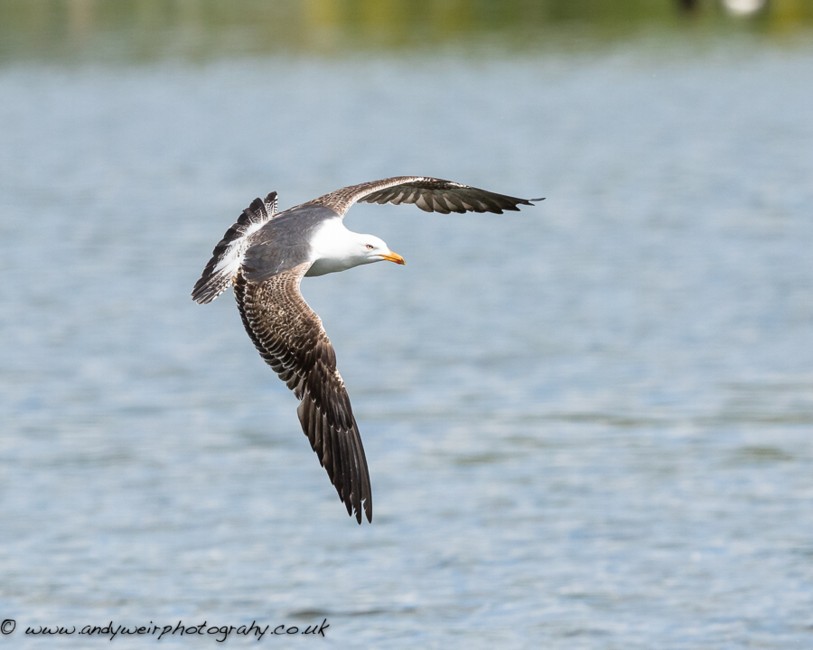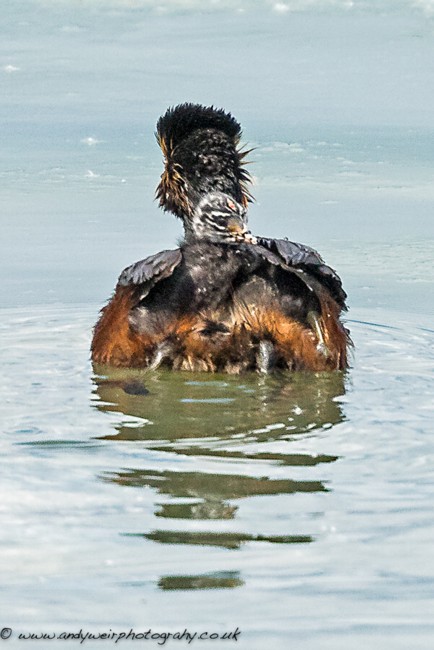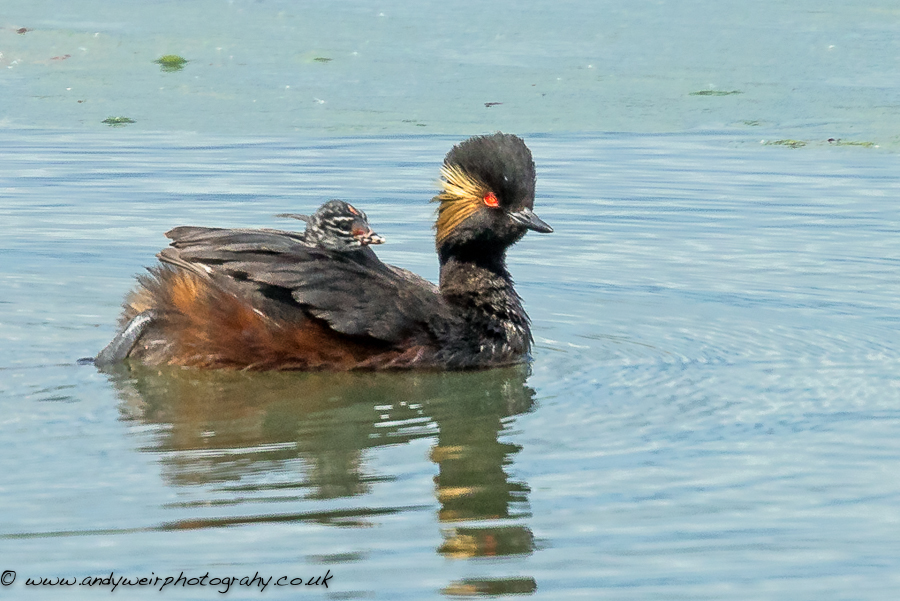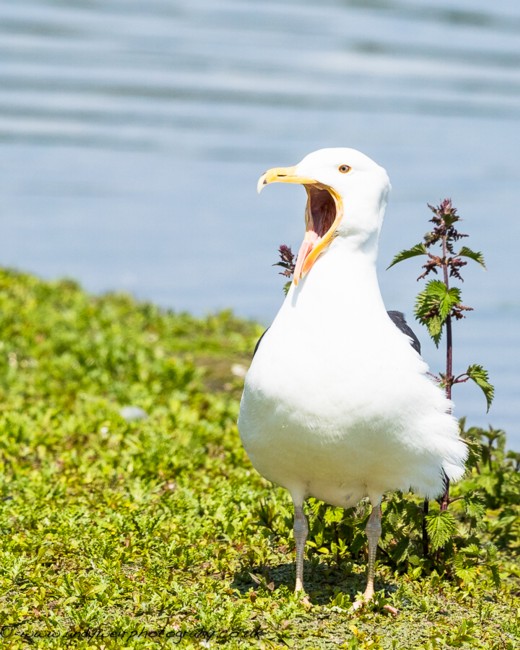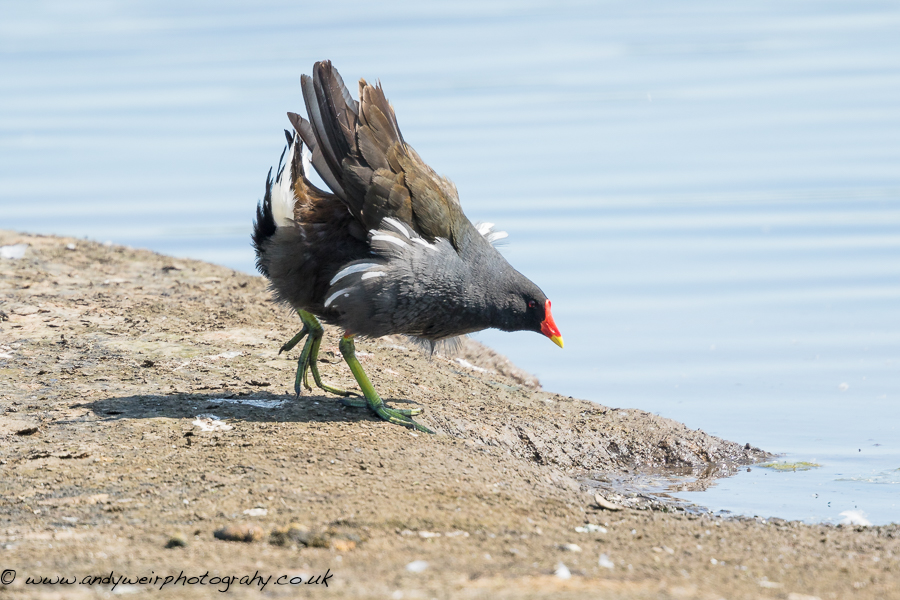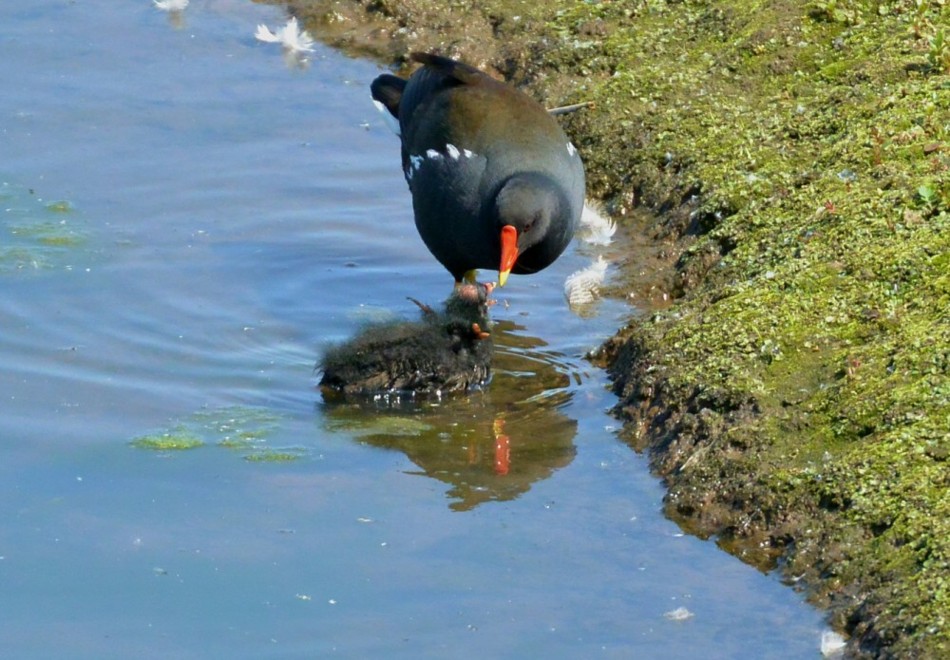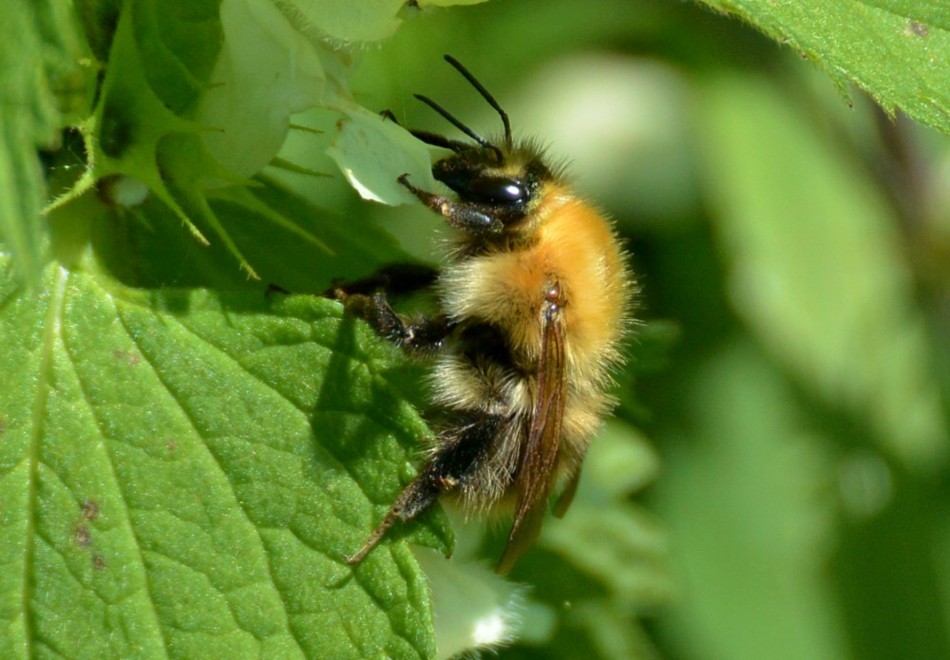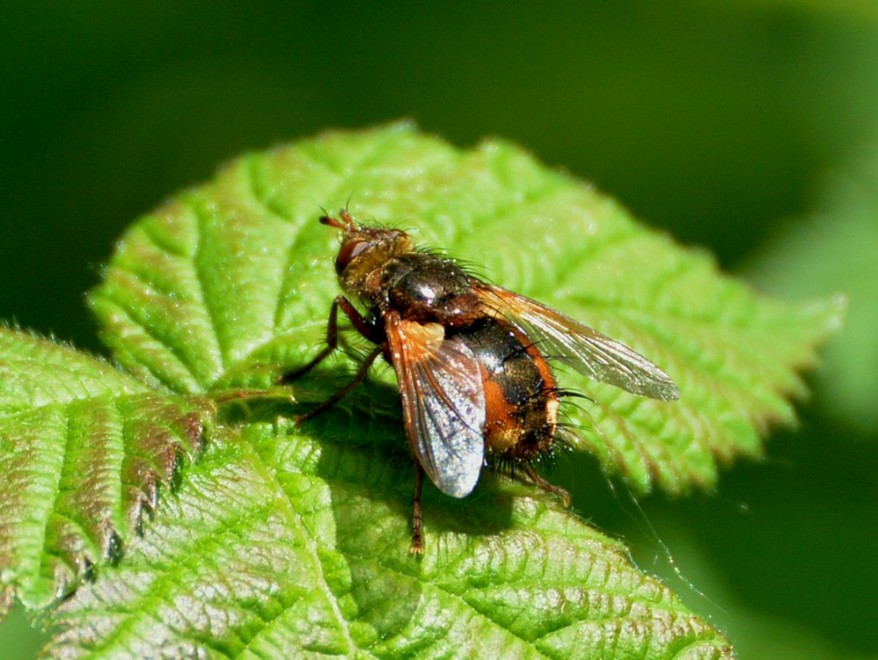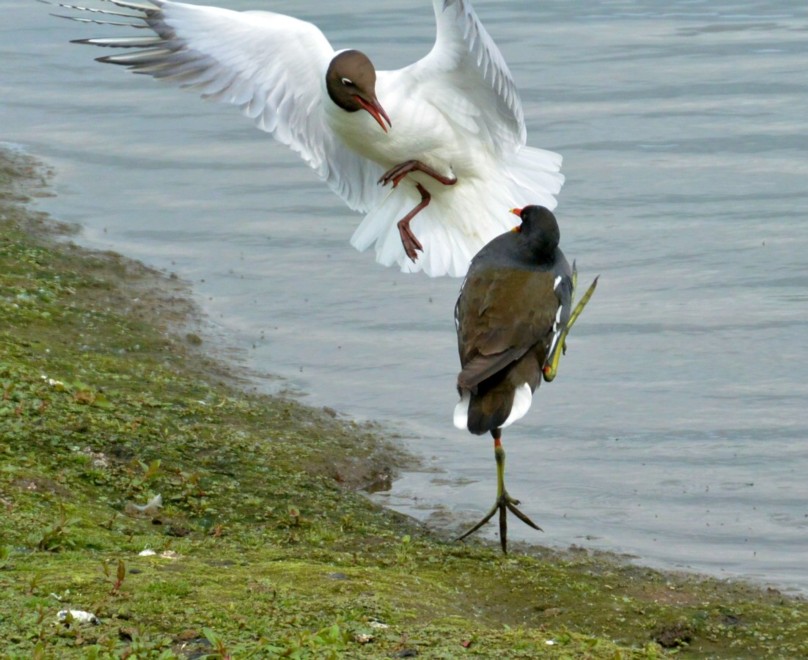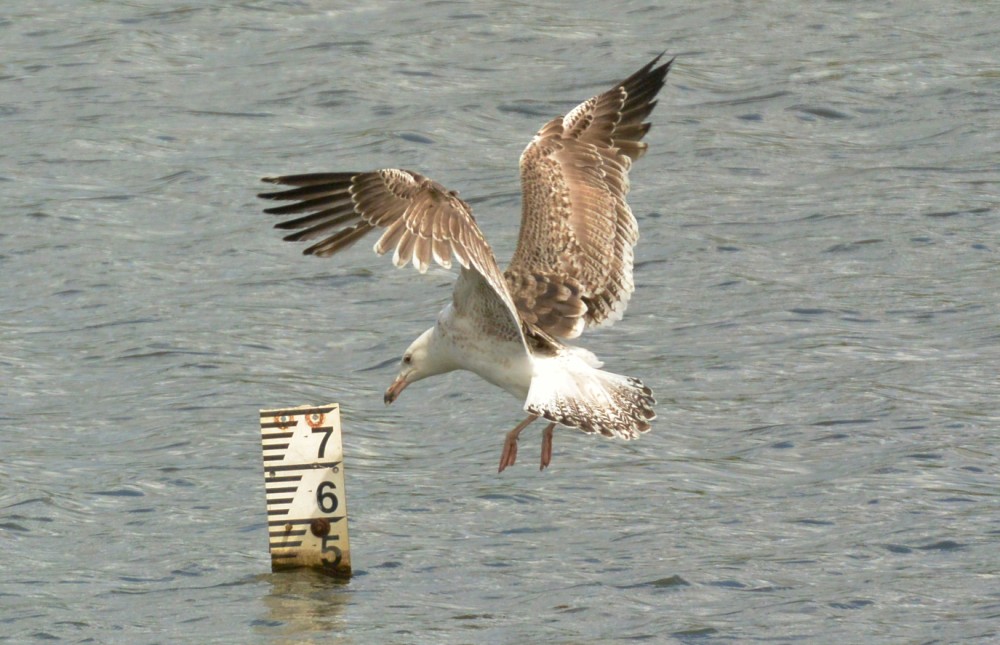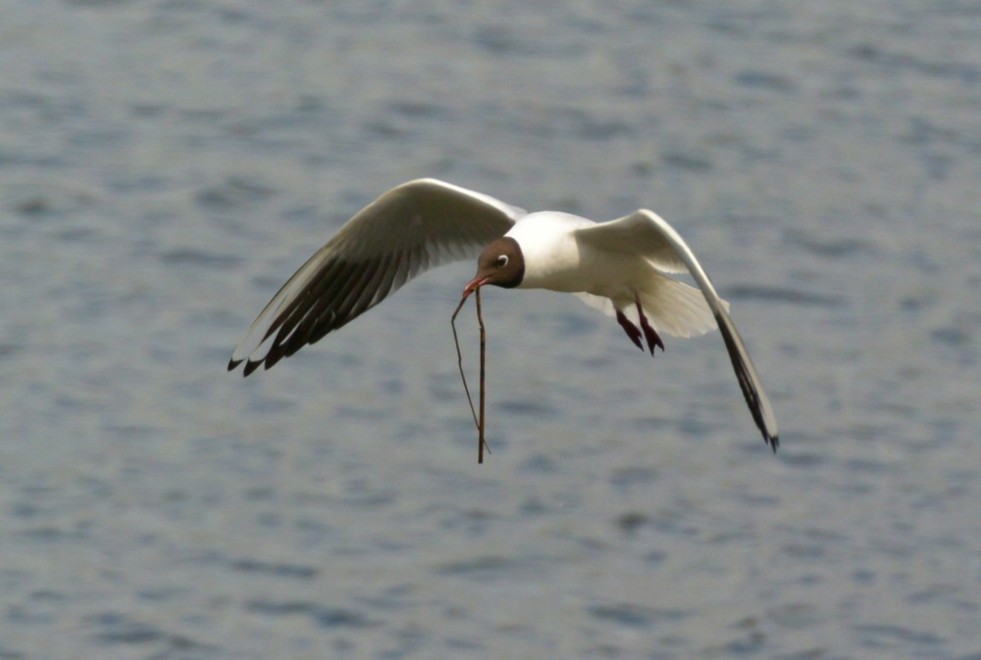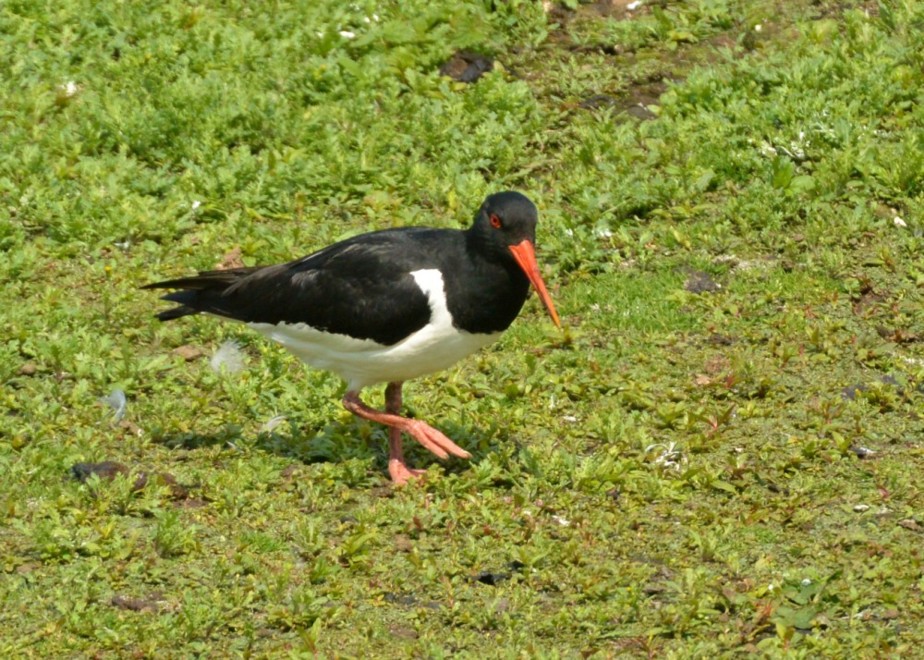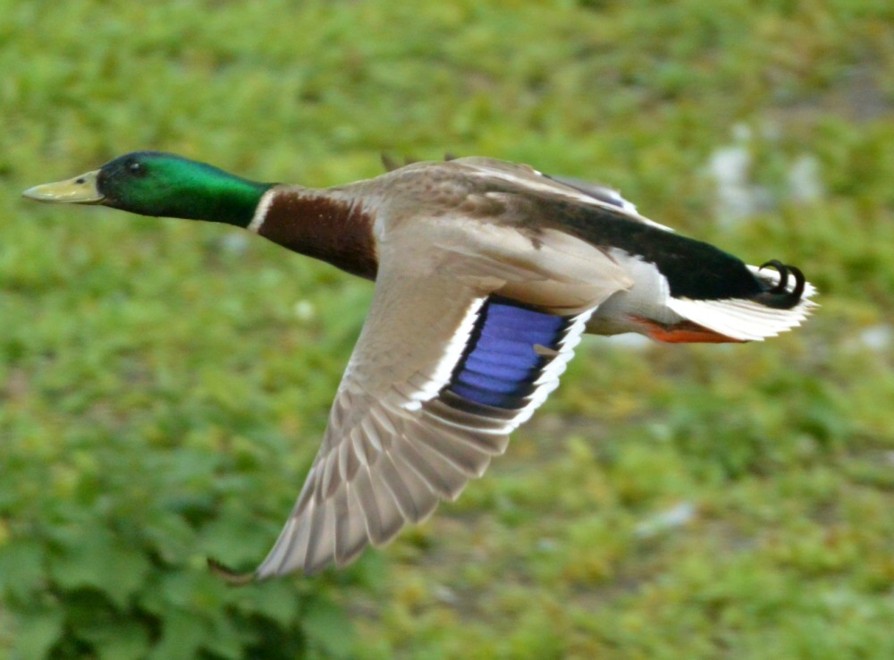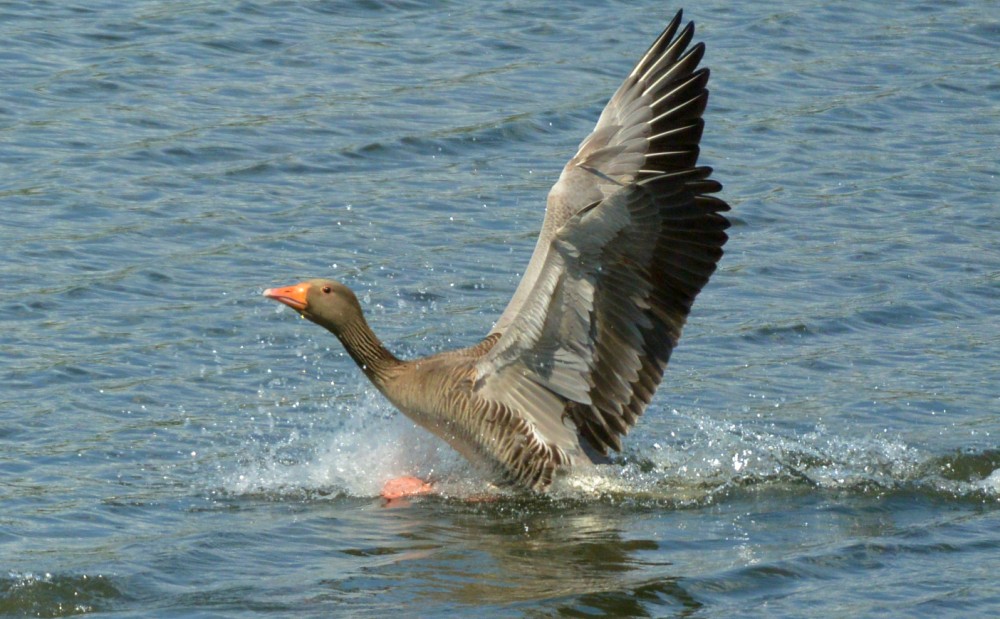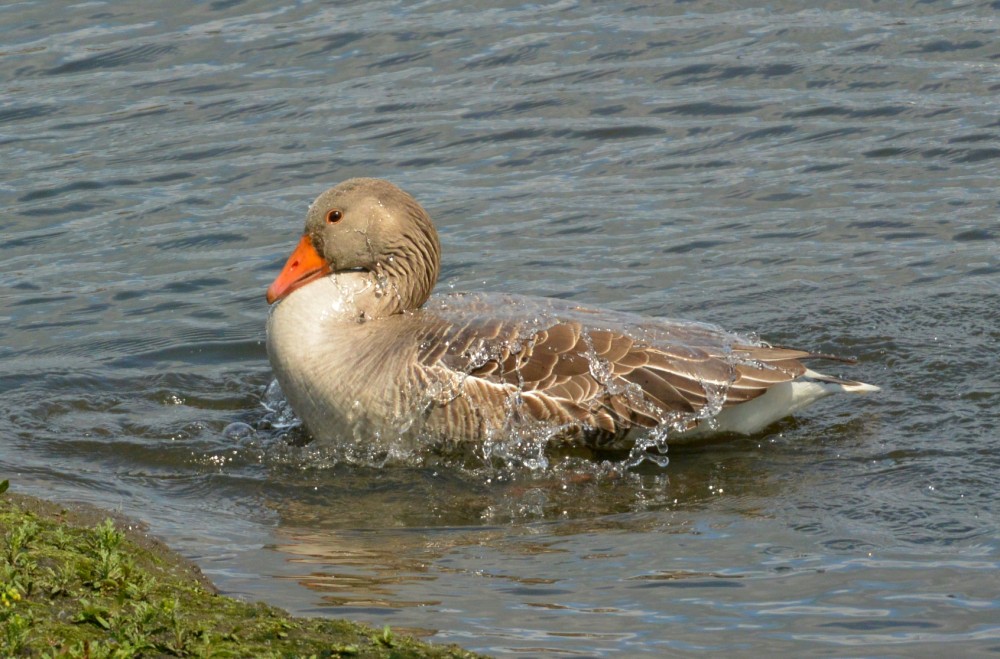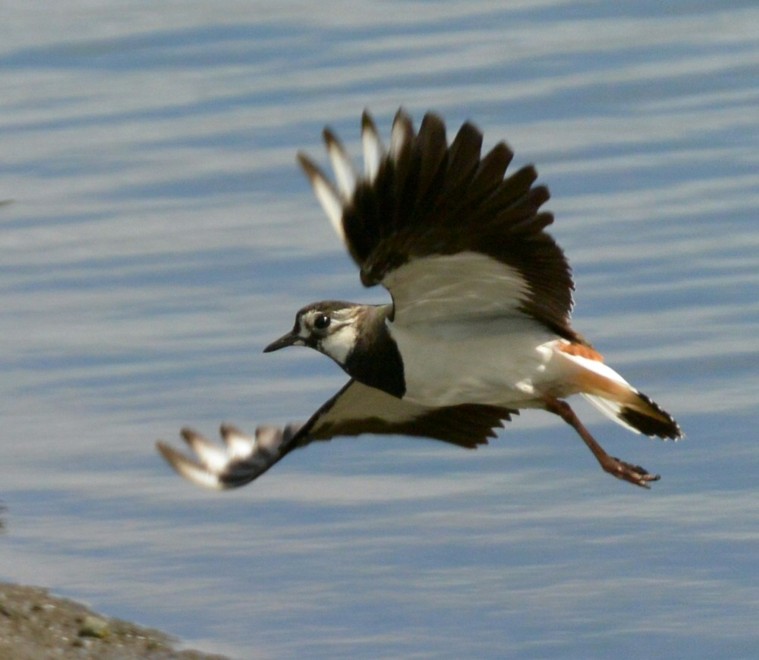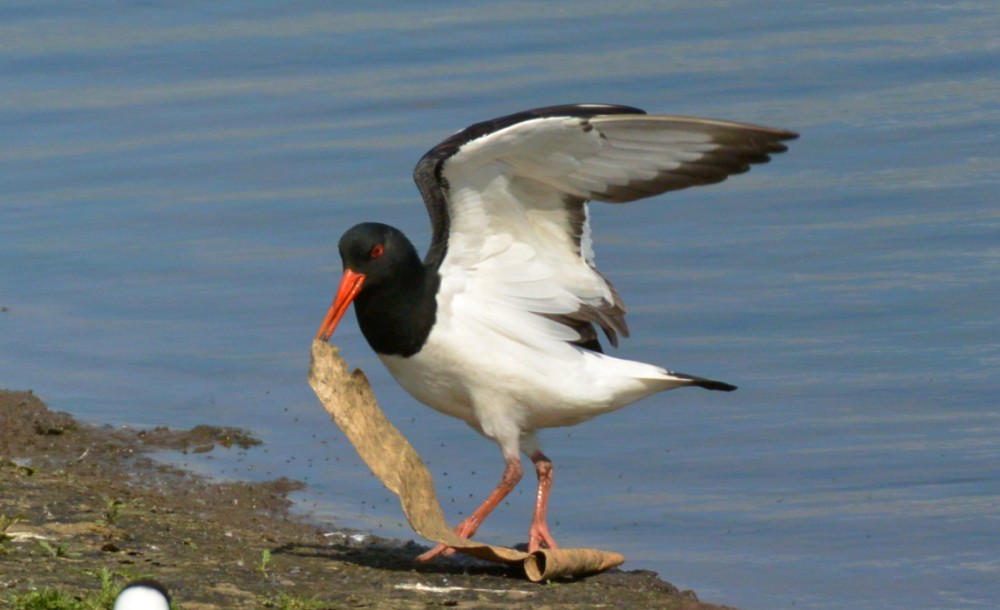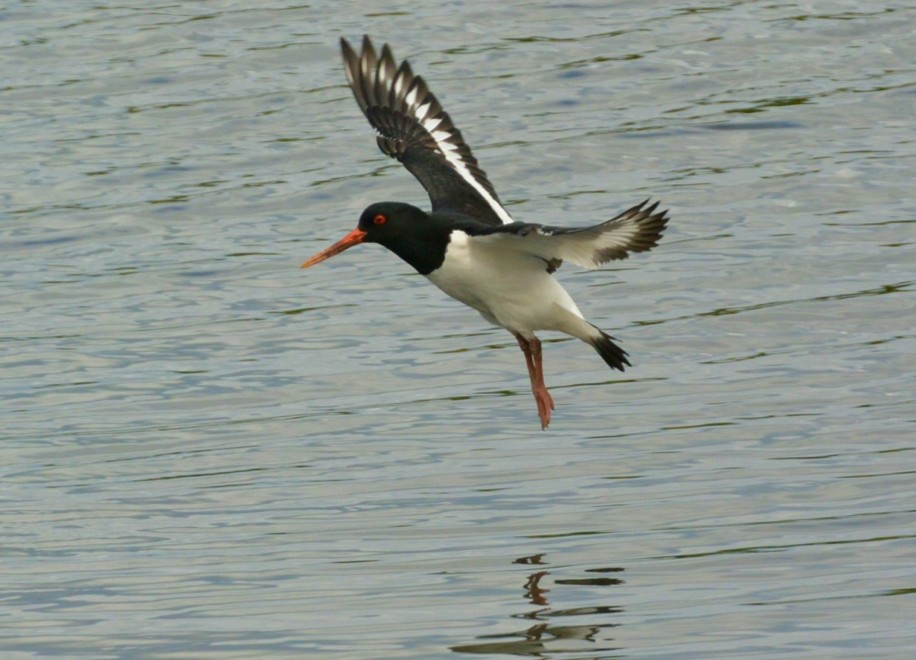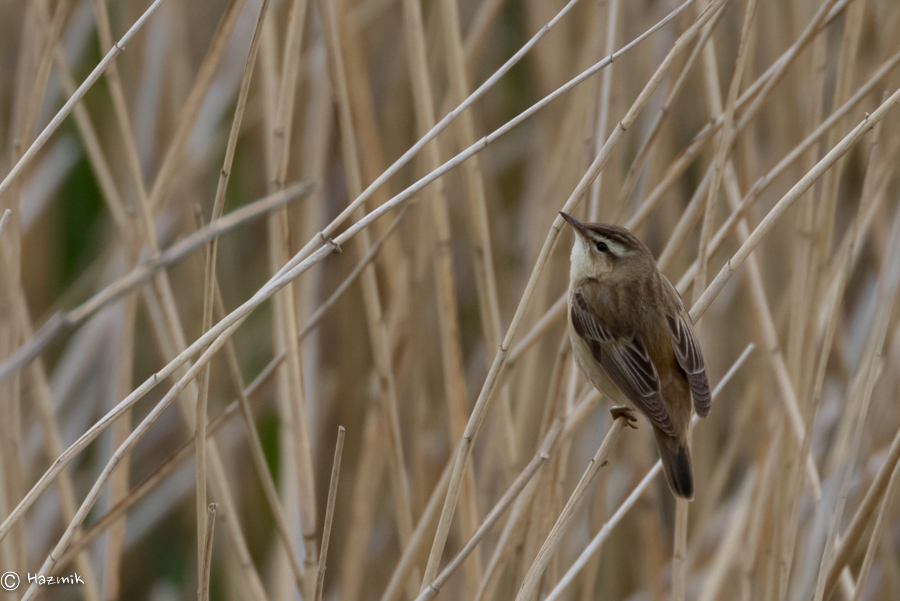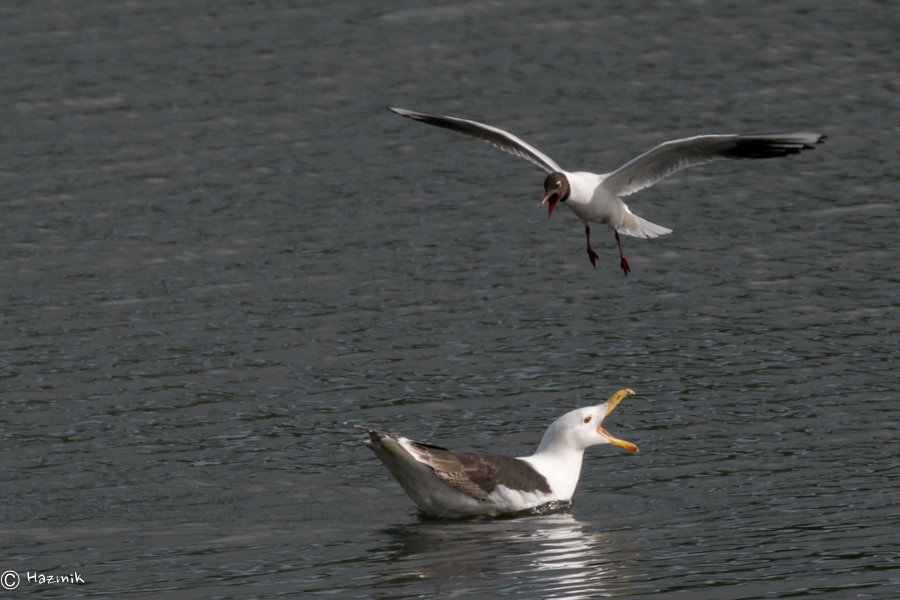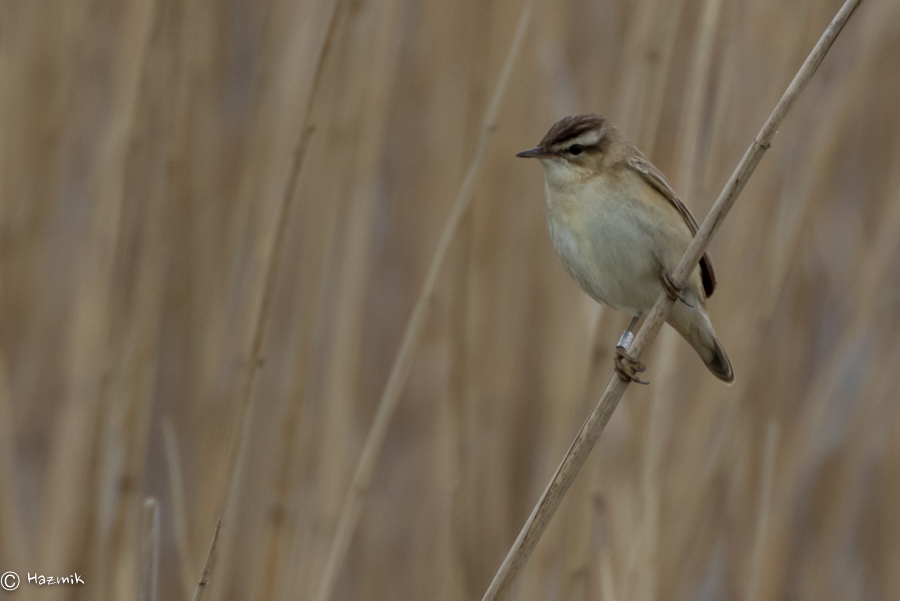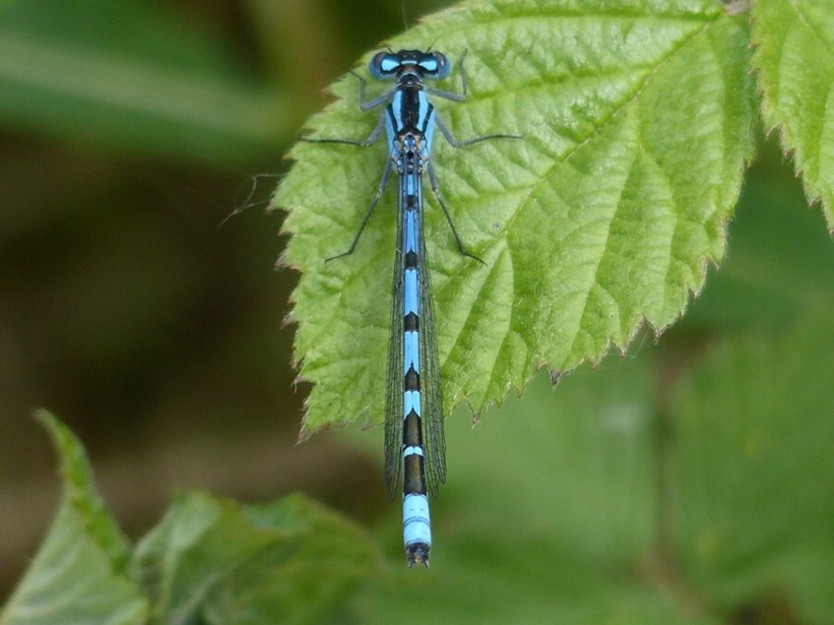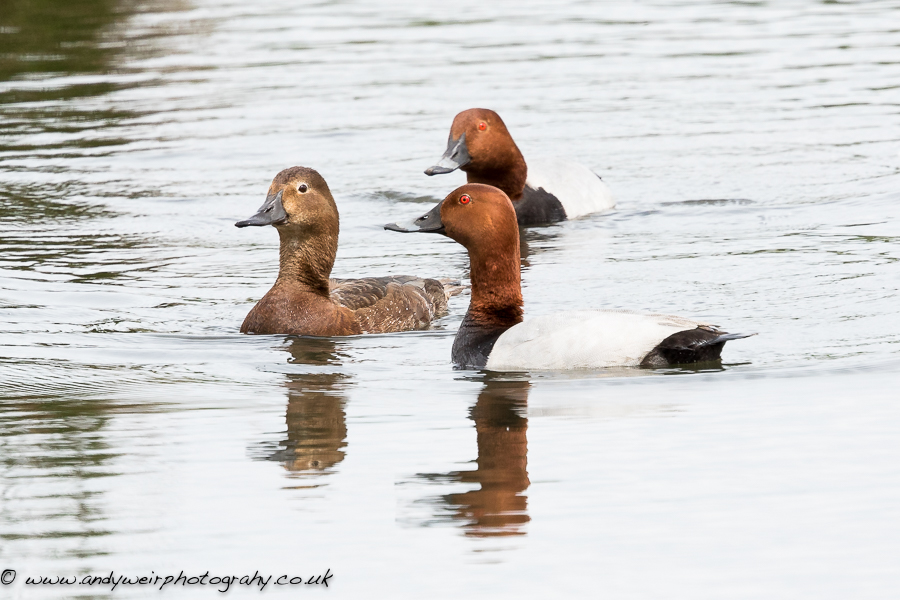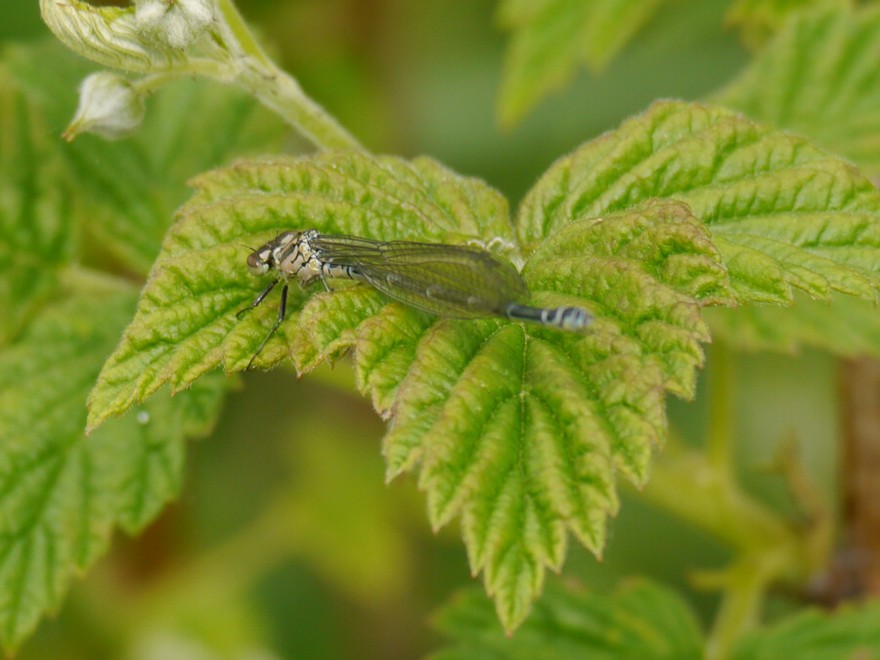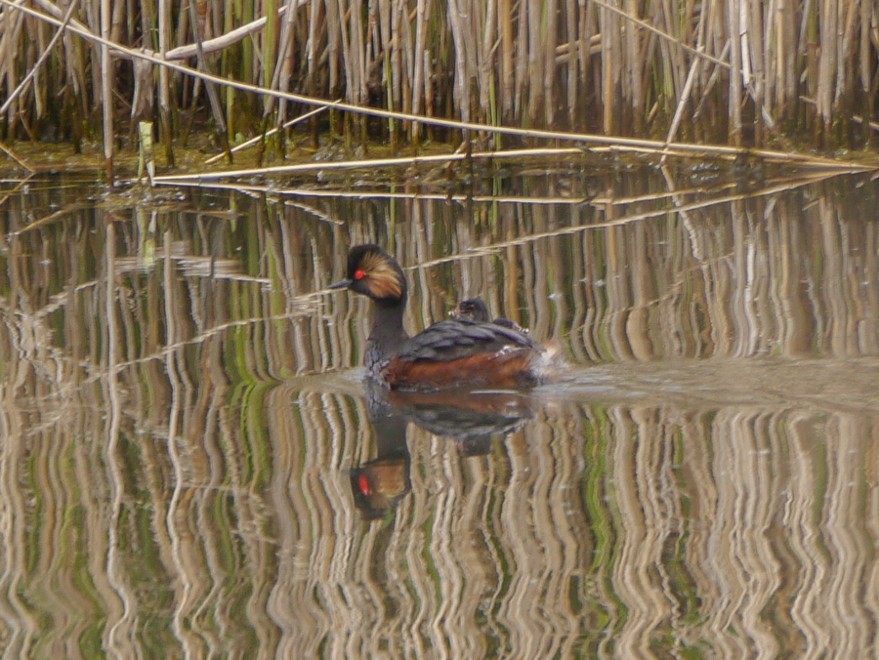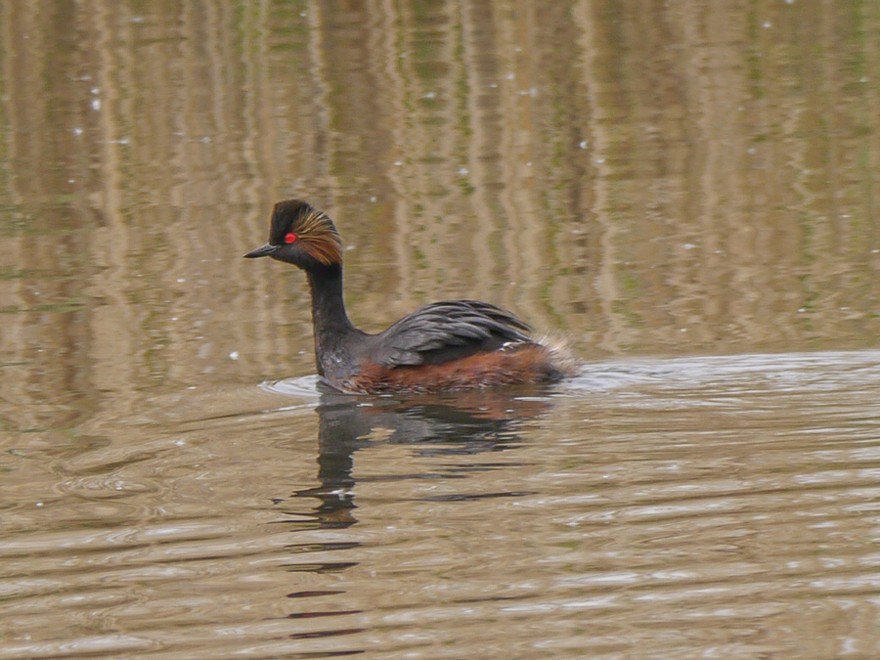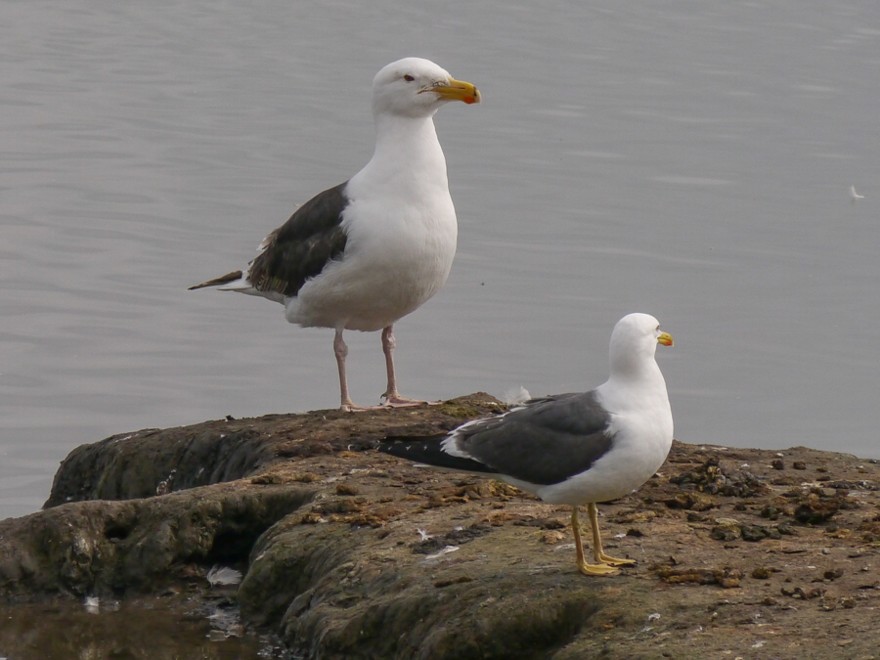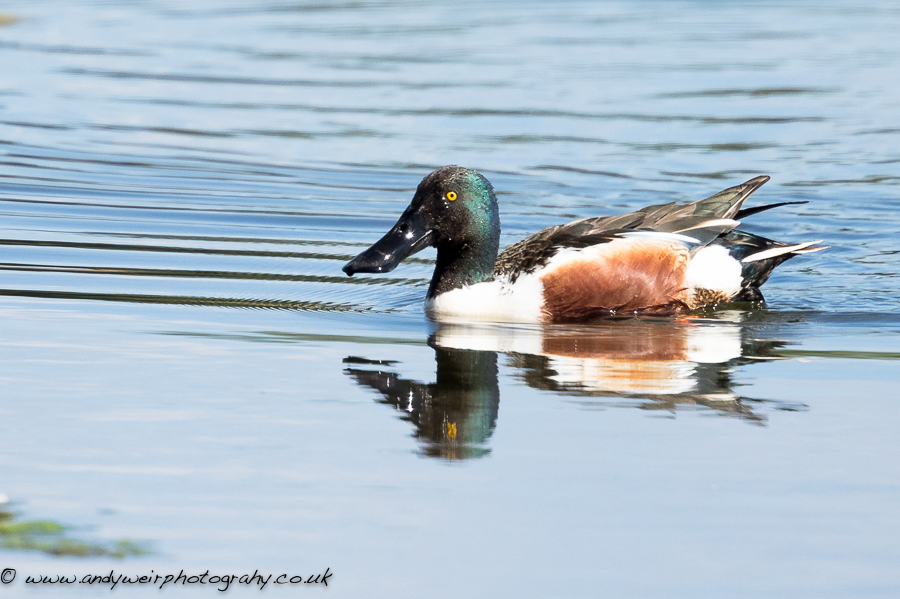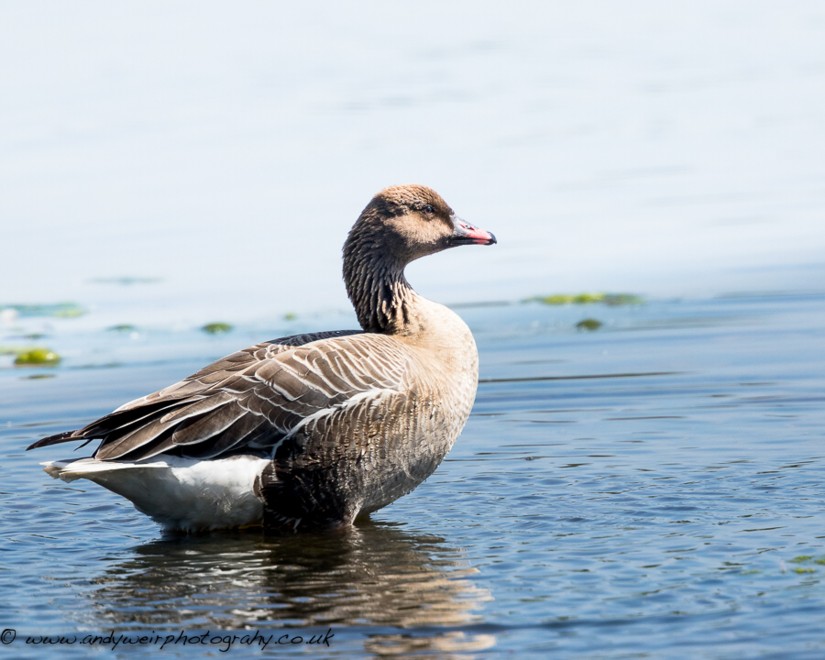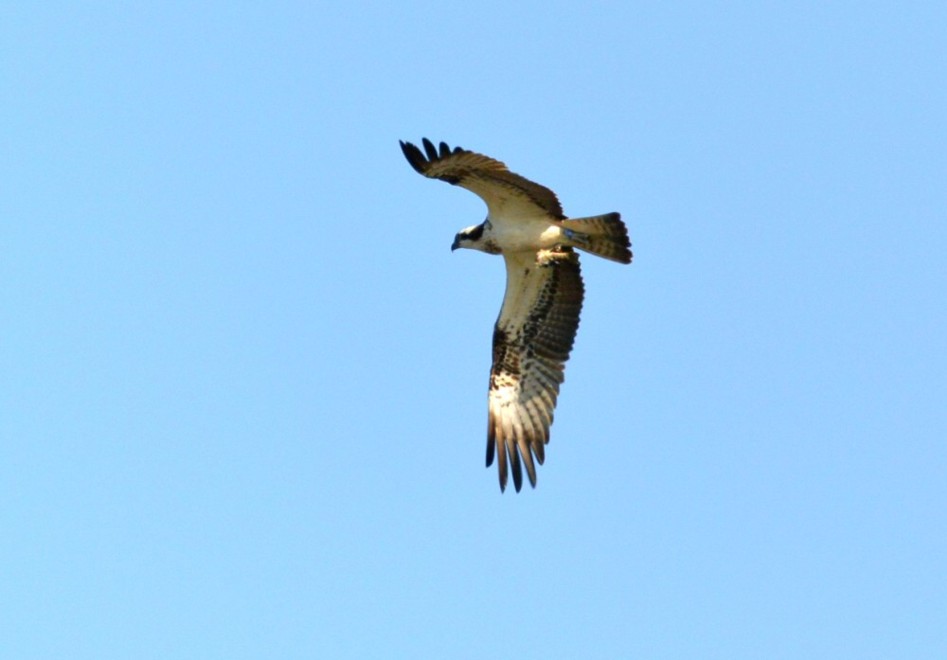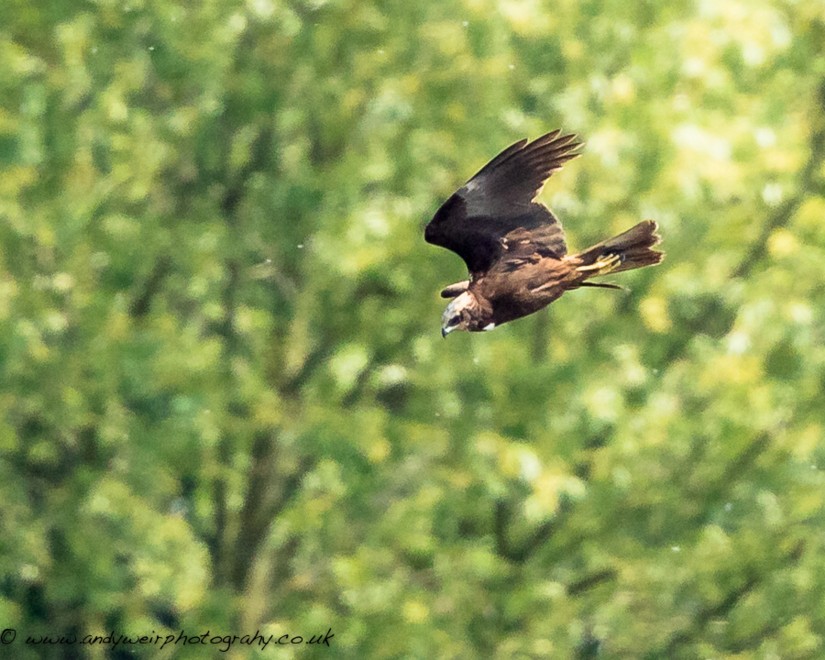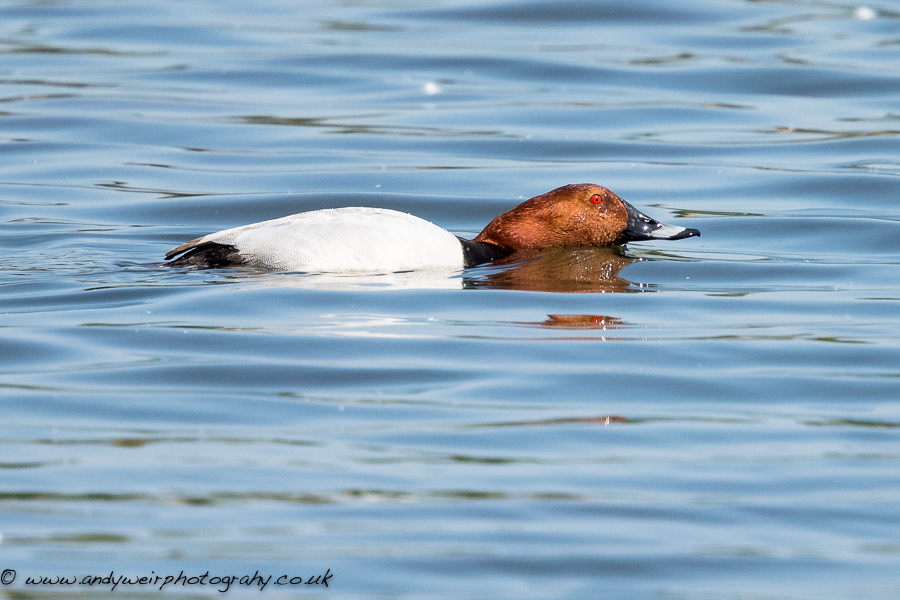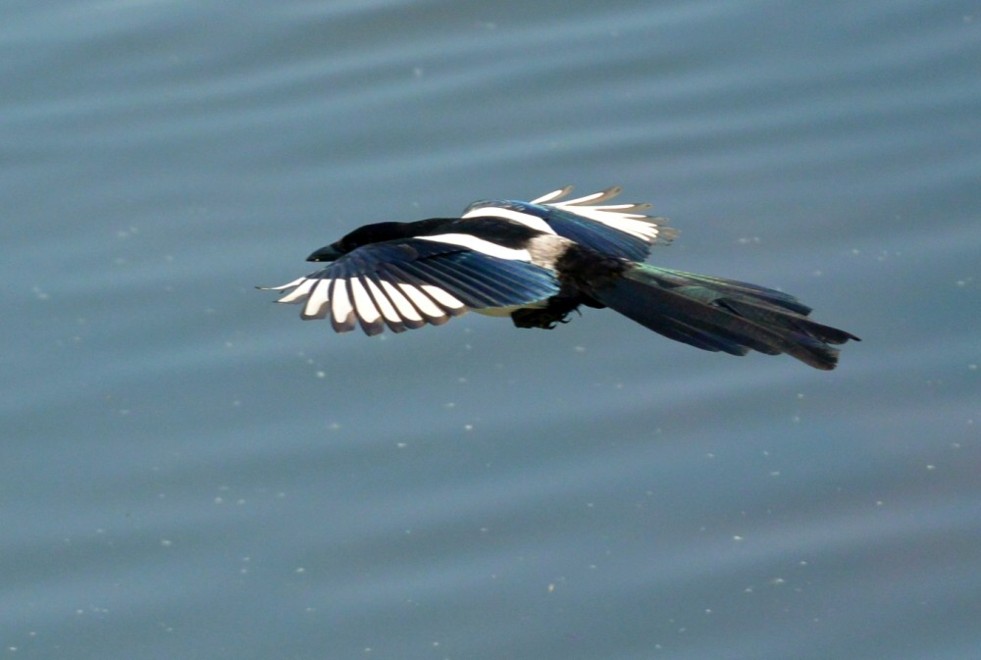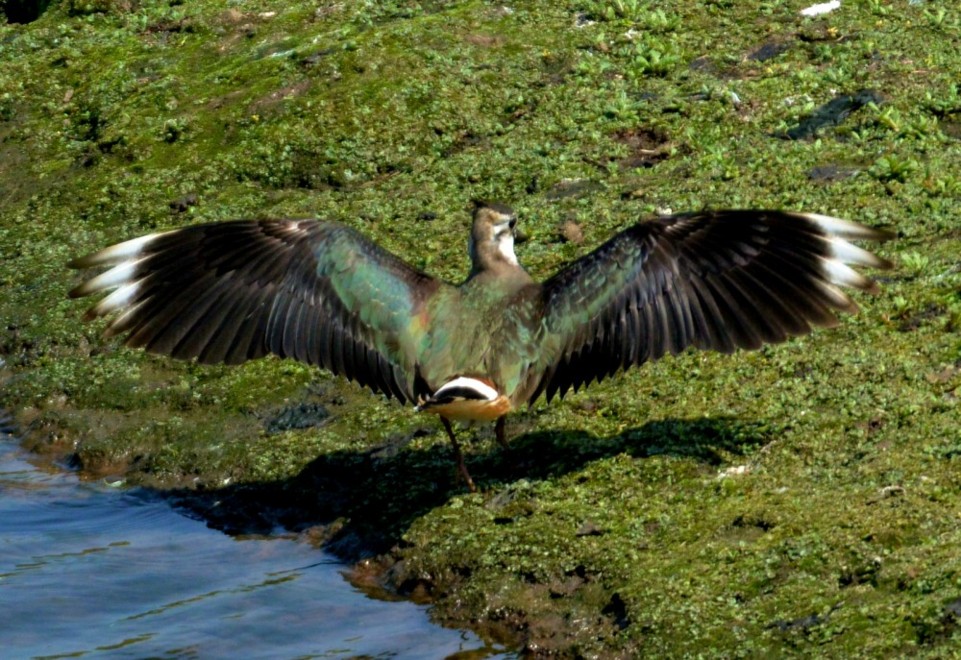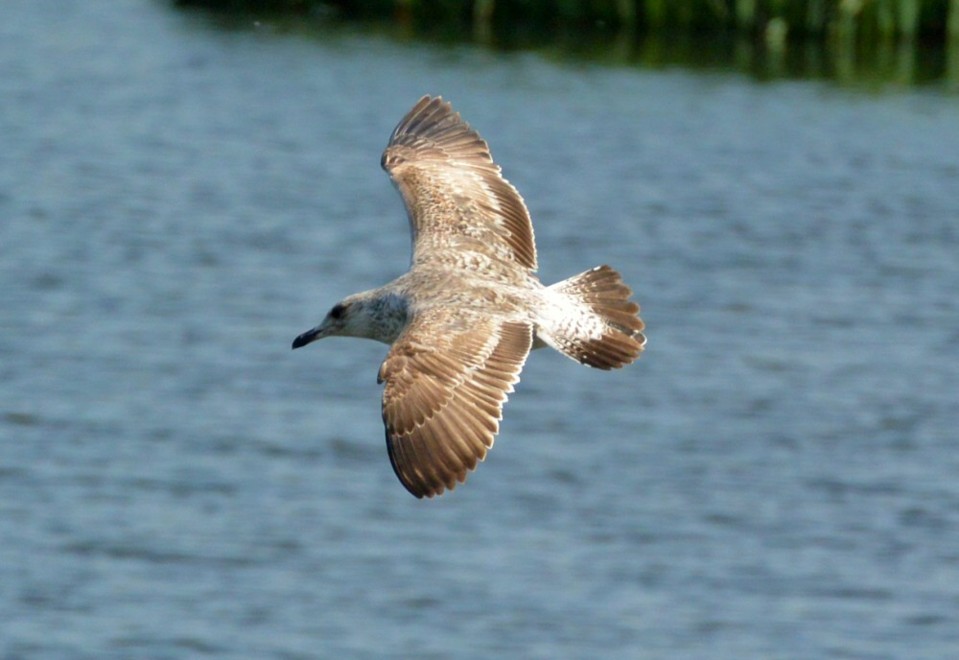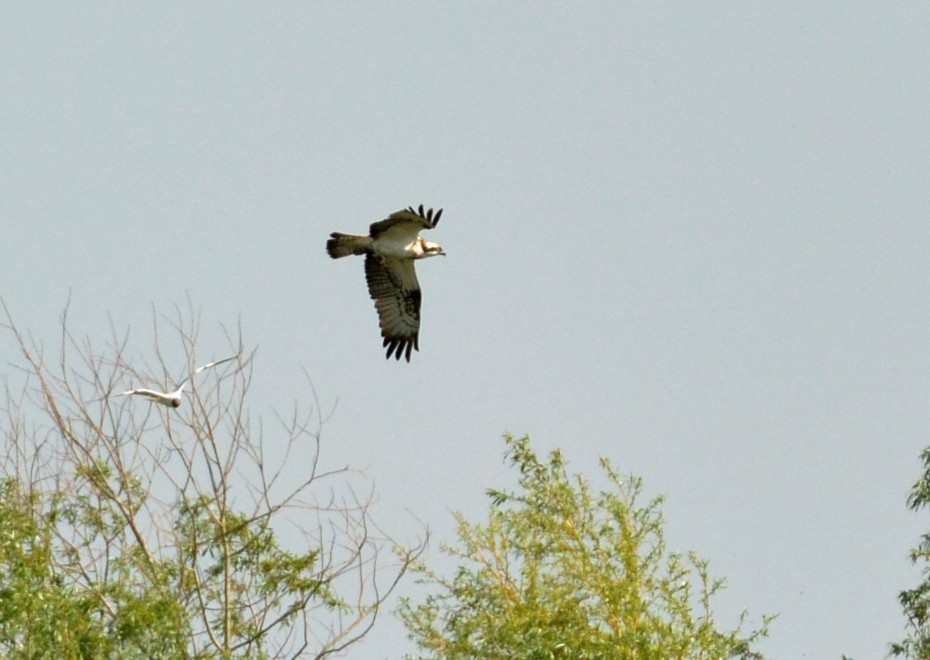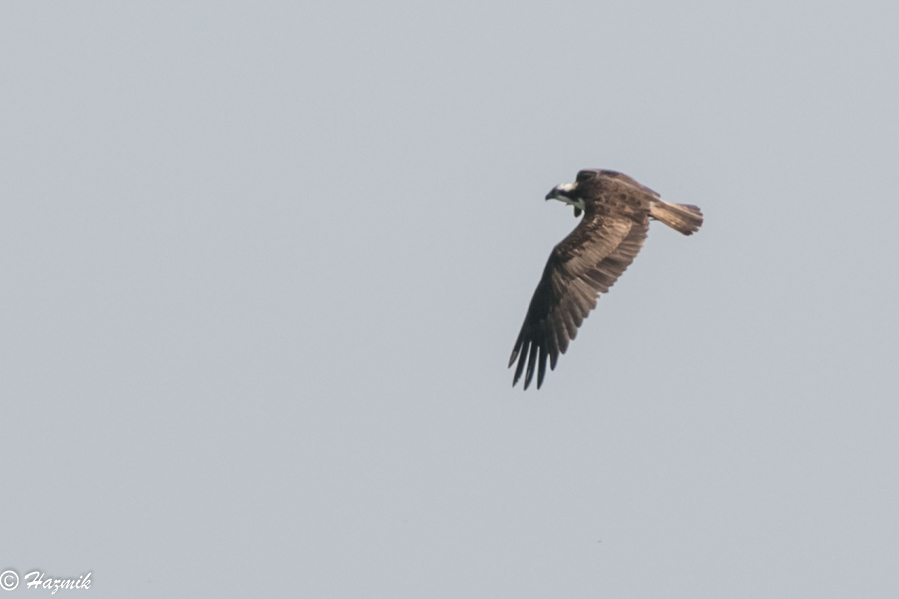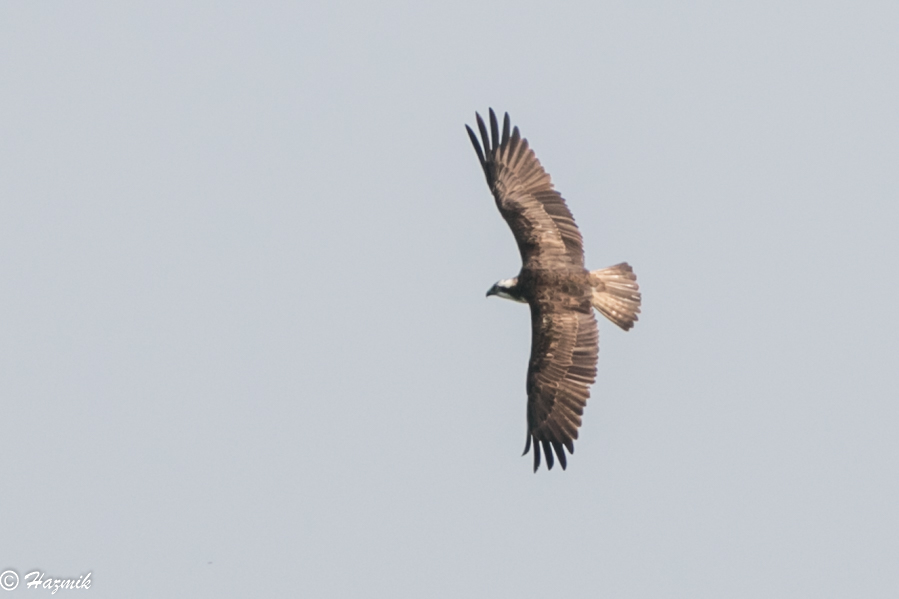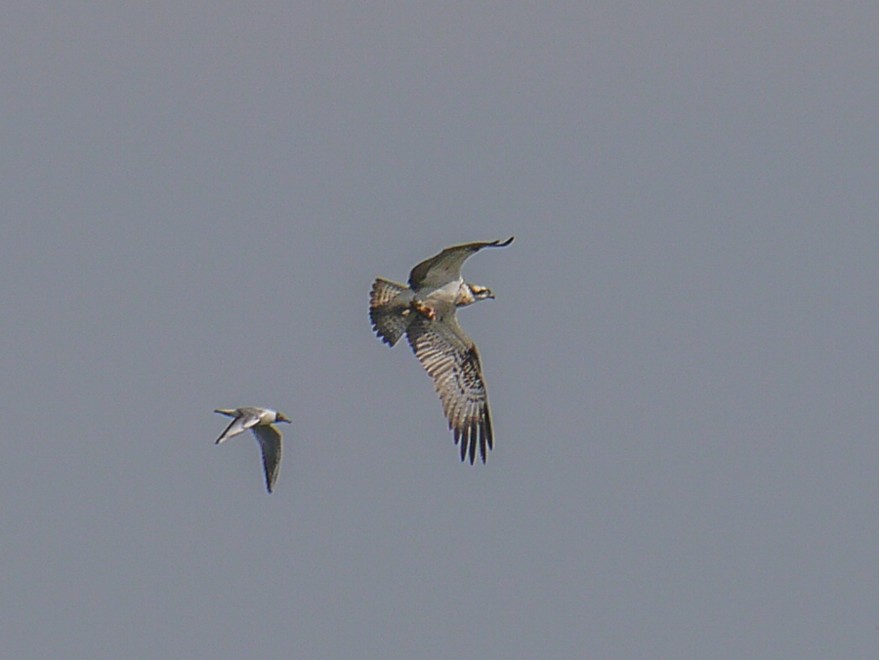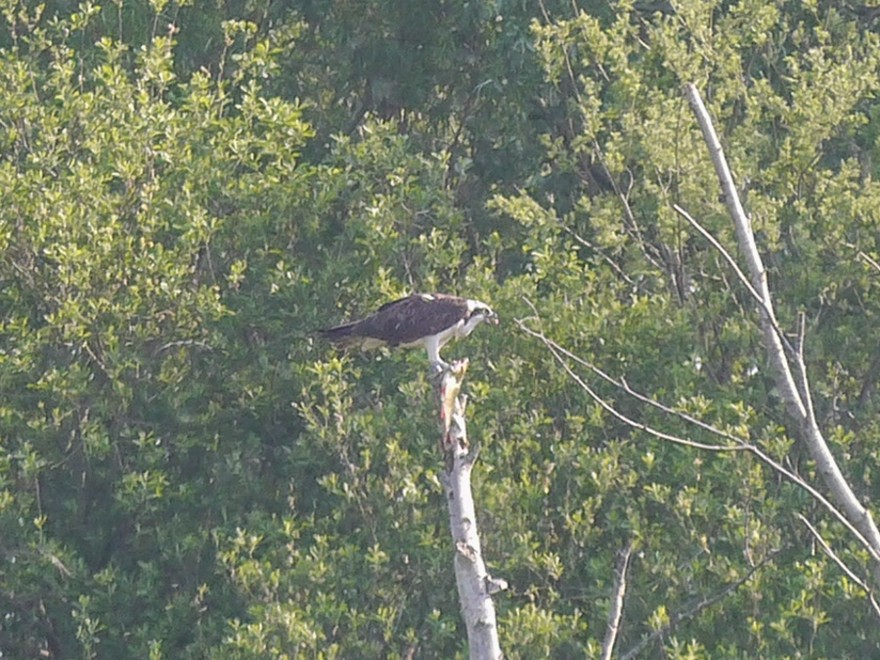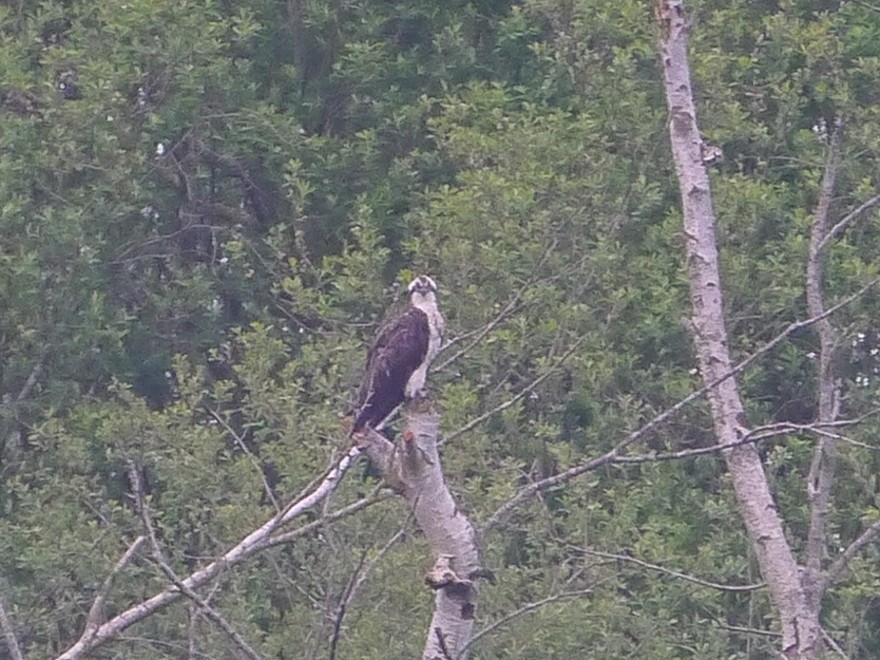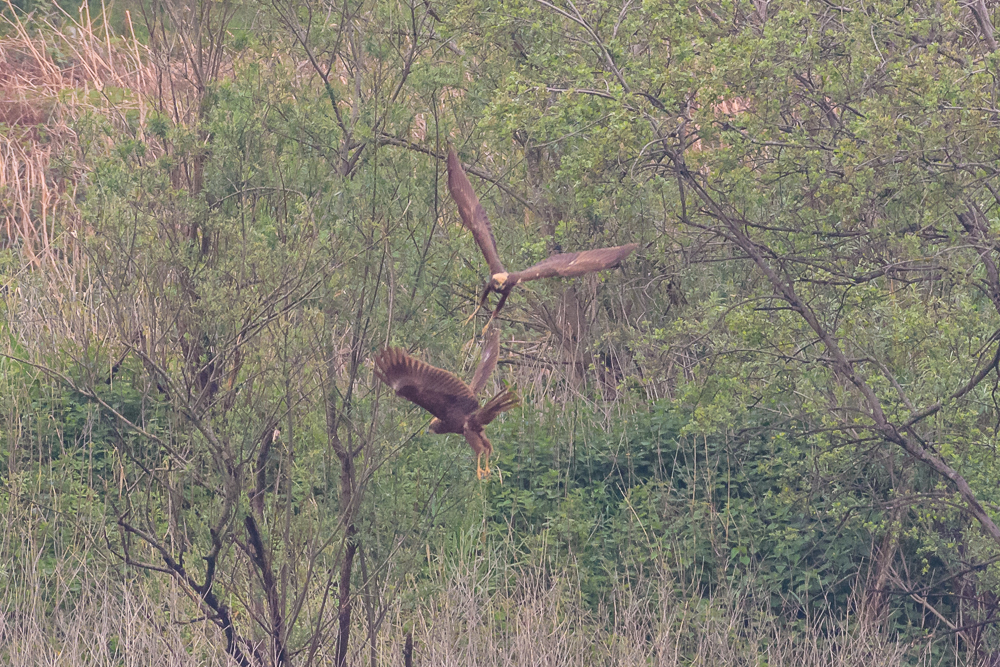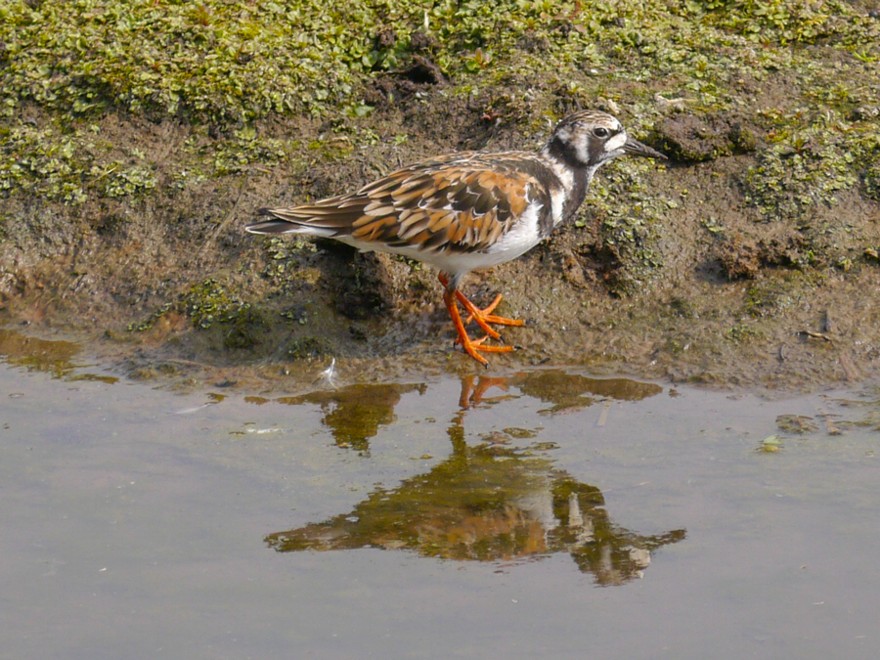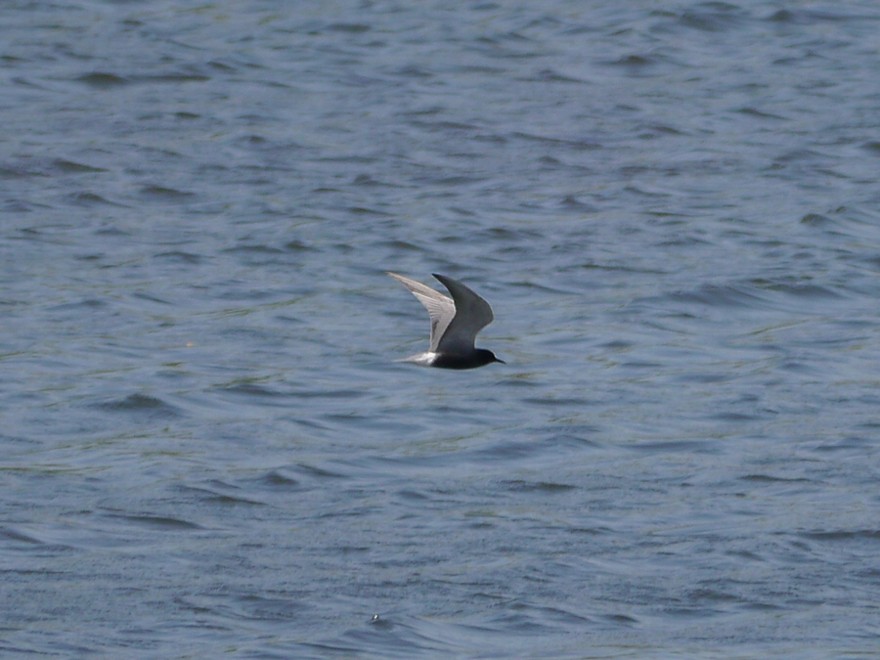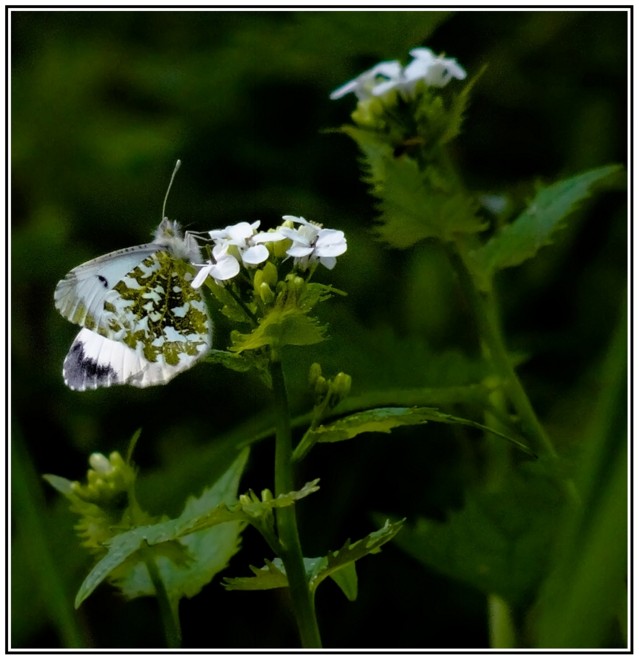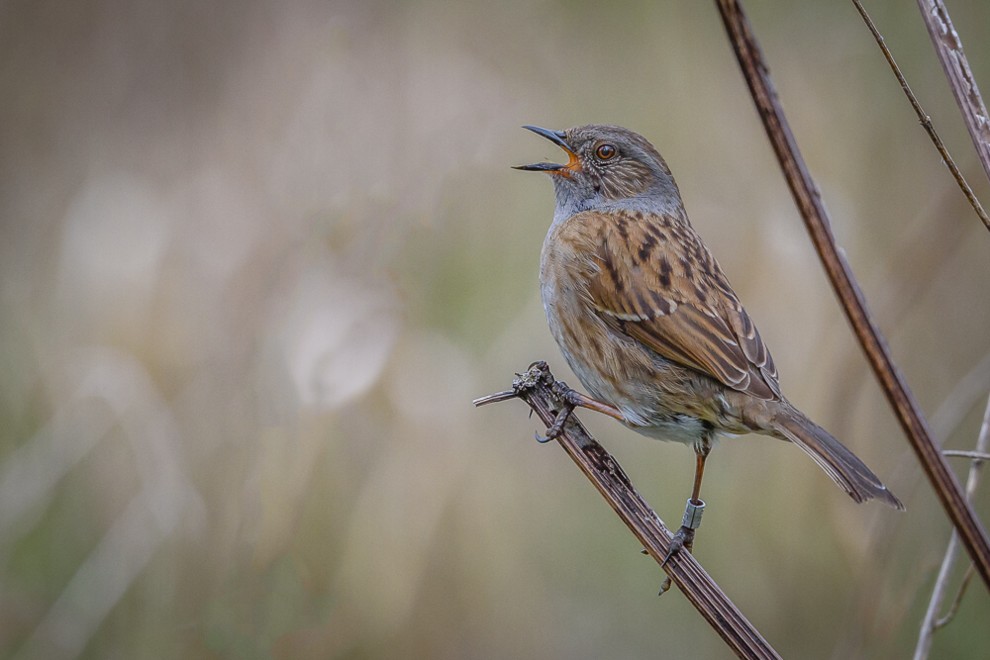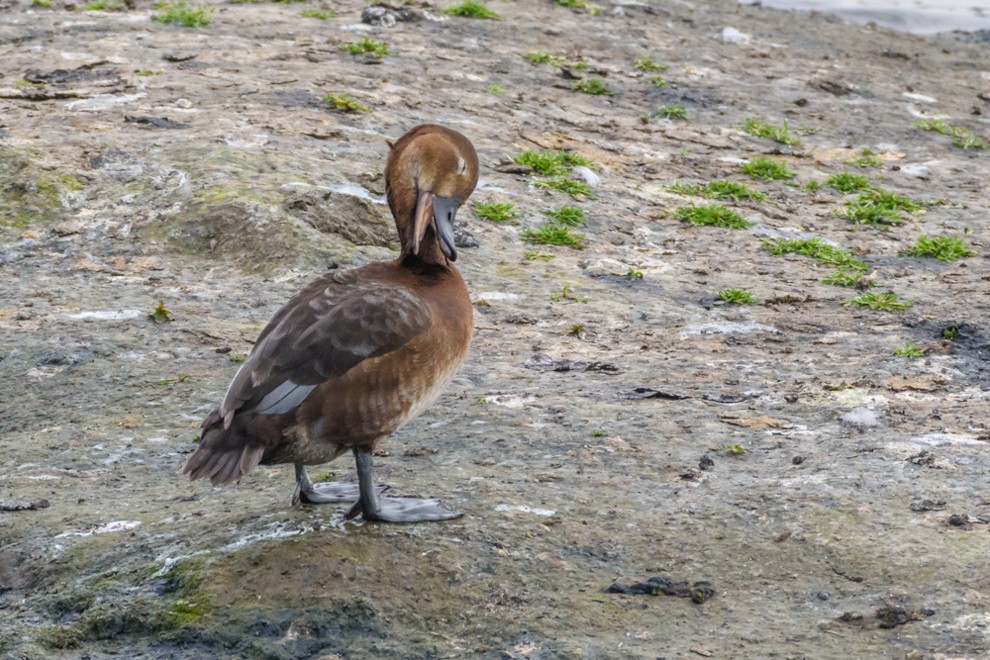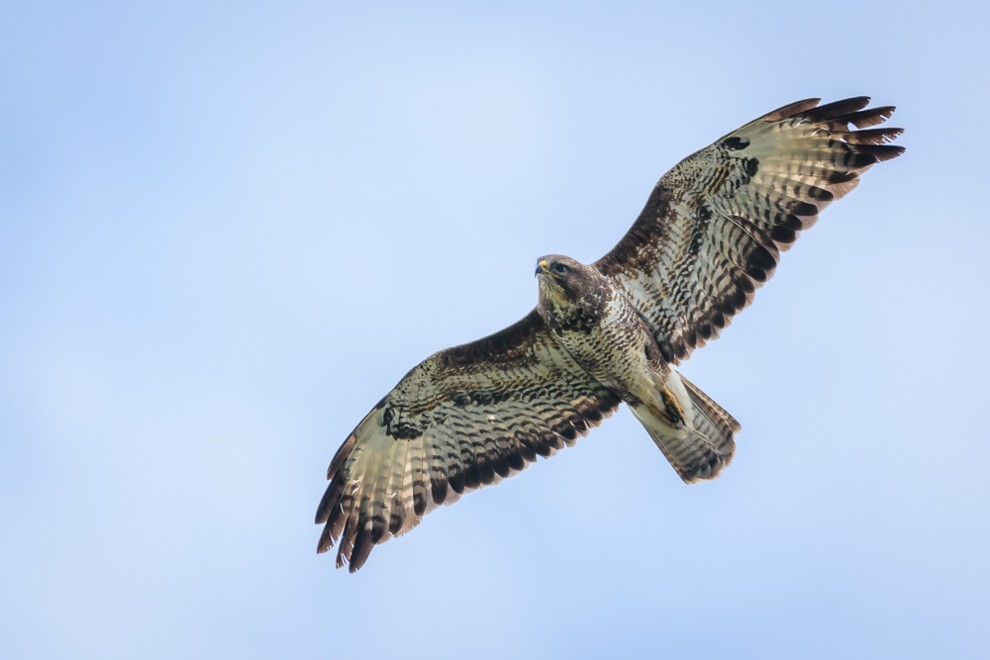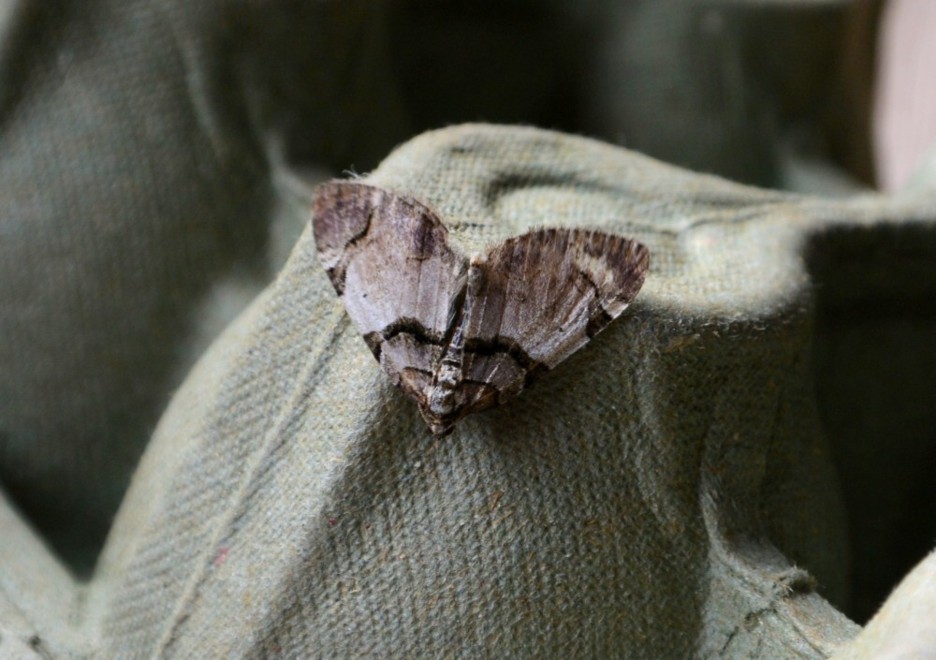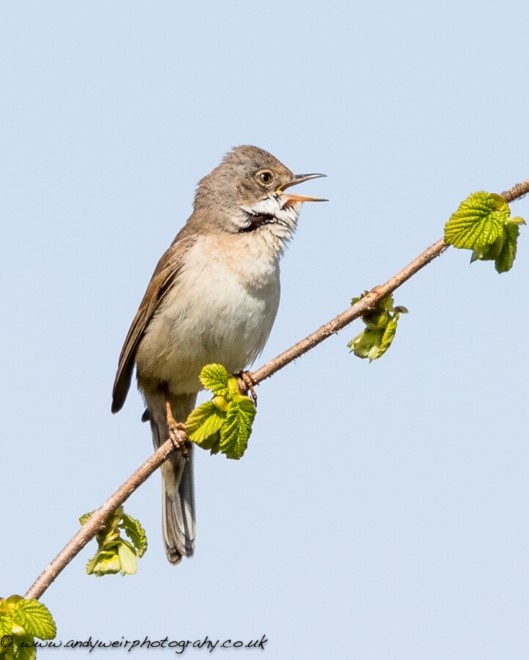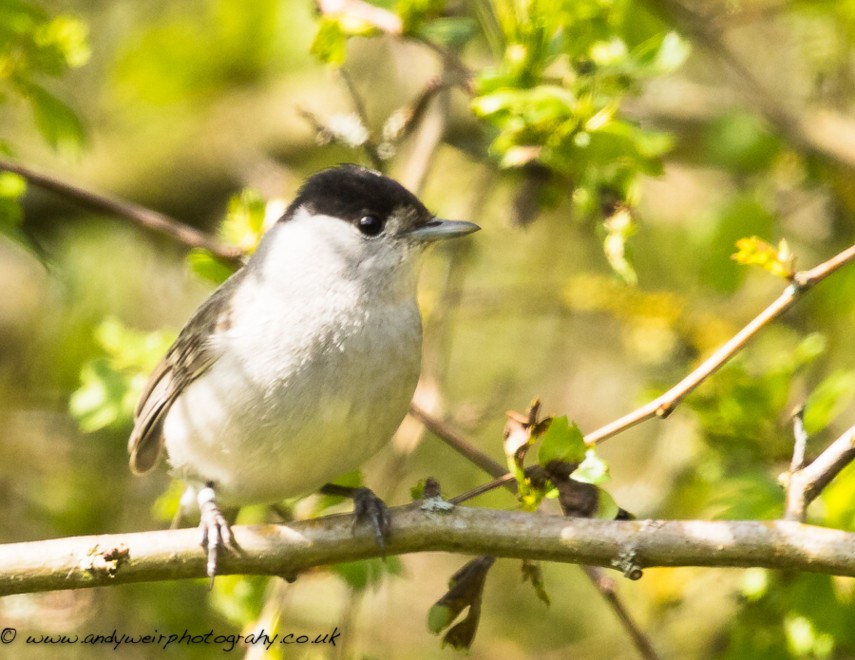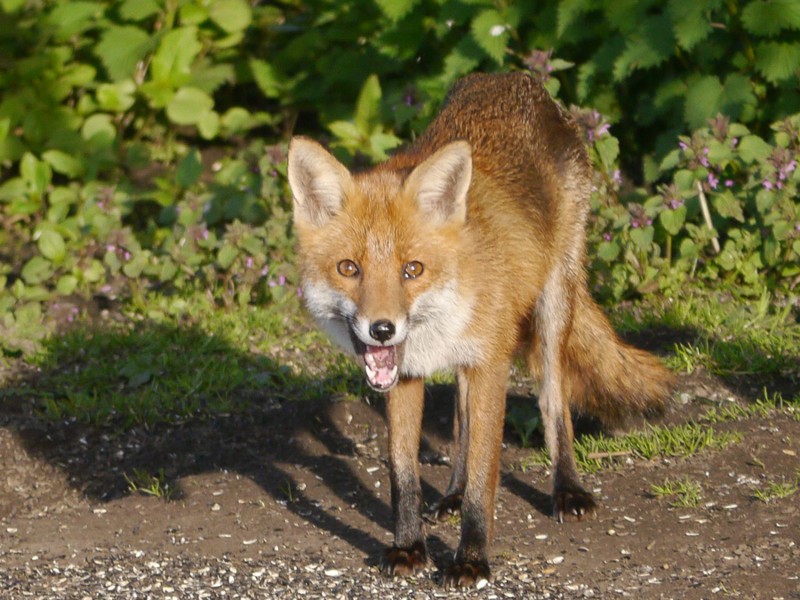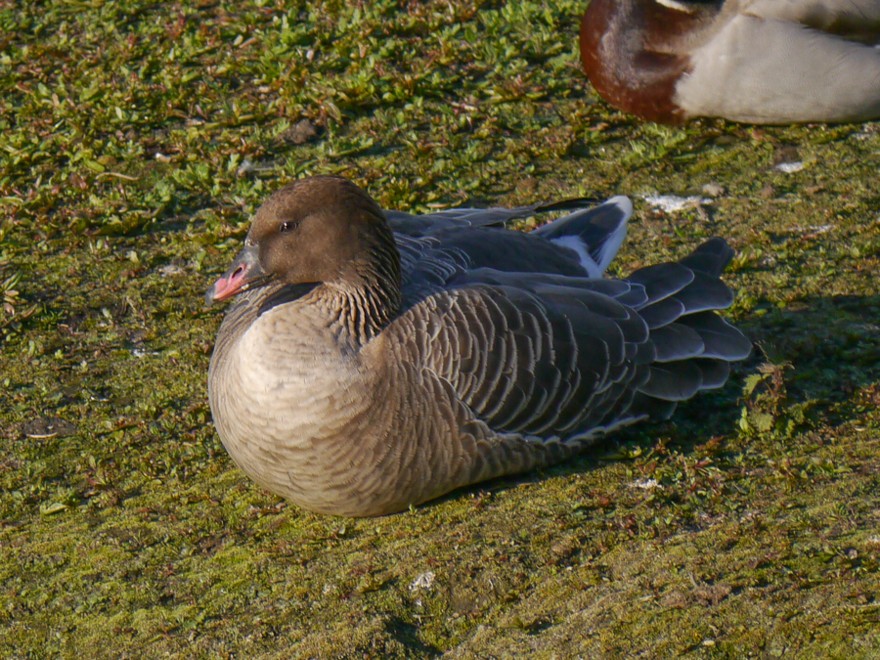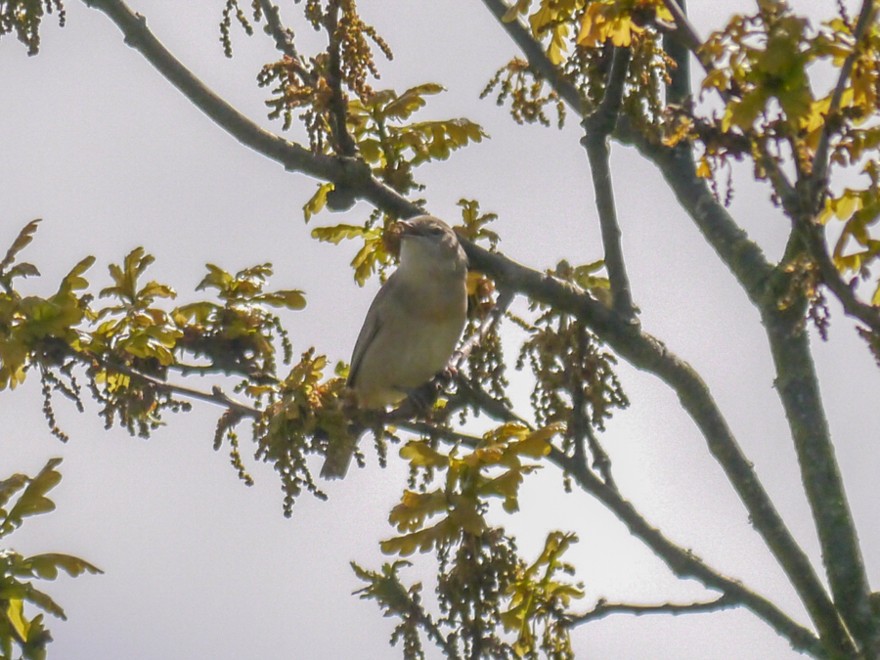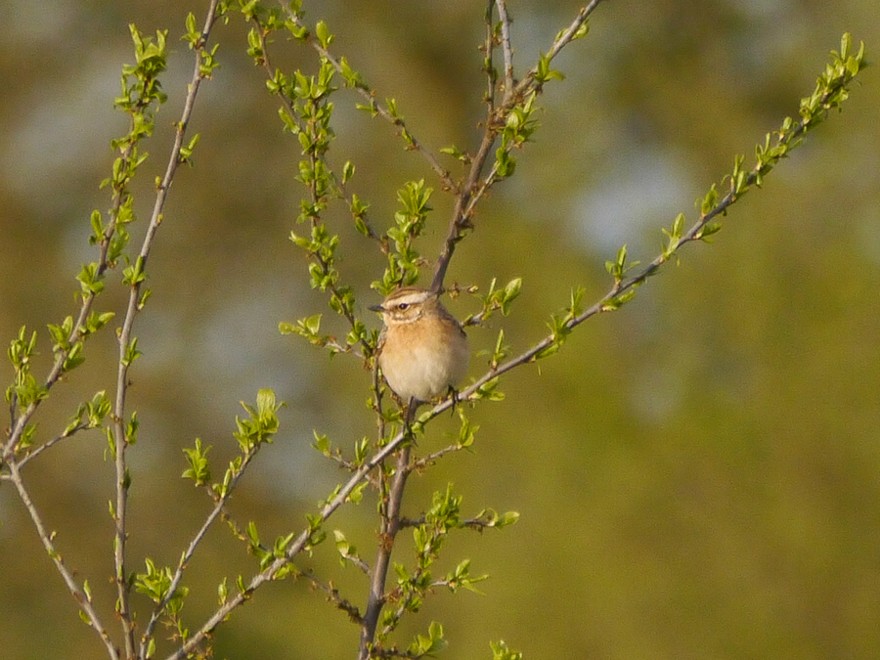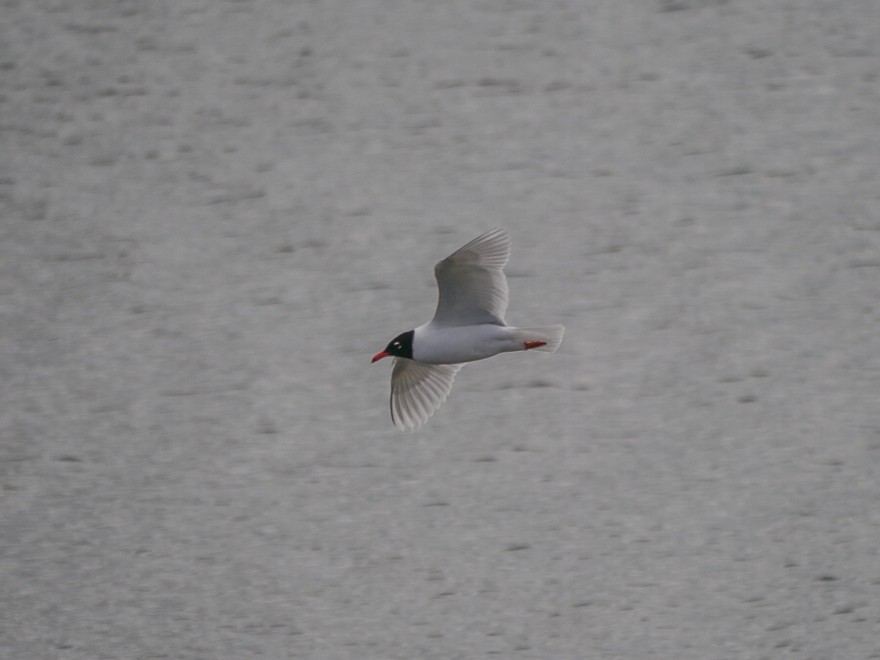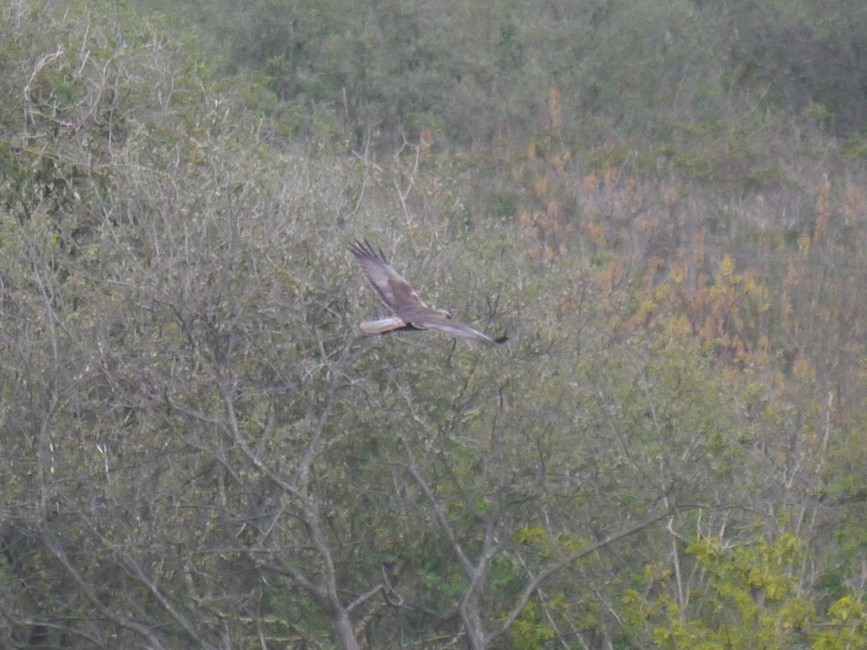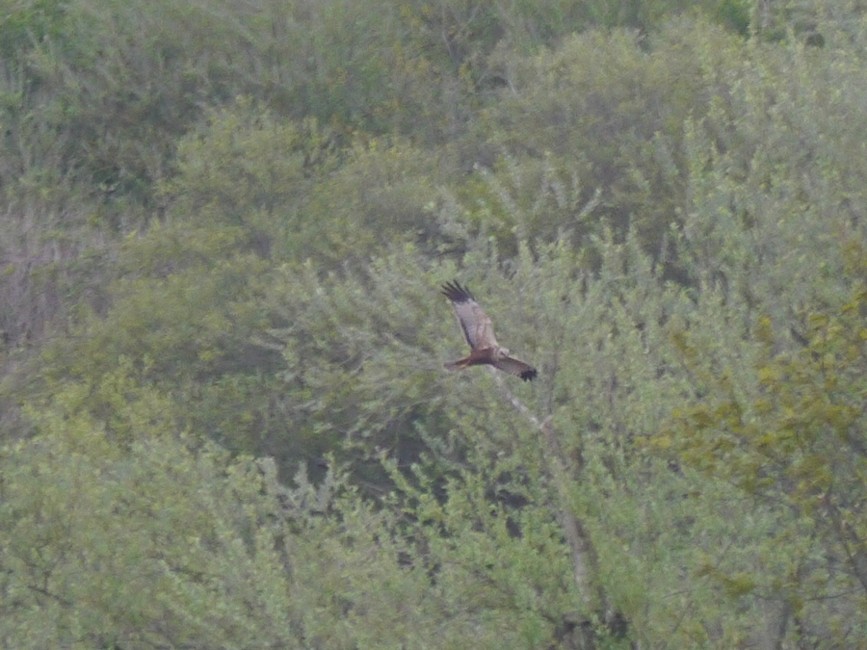Woolston Eyes Monthly Sightings
2016-05-31
A lovely day and as always plenty of interest. Two Peregrines were on the viaduct but no sign of any young. On the fields to the north of No.2 bed were two Little Ringed Plover and broods of Mallard, Moorhen and I suspect Gadwall although I could not get a clear view of the adult. A pair of Black-necked Grebes with one small young was seen briefly on No.3 bed together with a Pochard with 4 young. Five Canada Goose broods were present across the reserve. Butterflies were few in number but a Brimstone on no.3 bed and 2 Common Blues were noteworthy. Photo; Speckled Wood
Submitted by: Dave Hackett
2016-05-28
Red-eared terrapin(Trachemys scripta elegans) from the footbridge.
Submitted by: Andy Weir
2016-05-28
Black-necked Grebe (podiceps nigricollis) from the south pool viewing screen
Submitted by: Andy Weir
2016-05-28
Photo of the Red-necked Terrapins from near the No.3 bed footbridge.
Cheers David
Submitted by: David Bowman
2016-05-28
Photo of the Four-spotted Chaser exuvia from No.1 bed
Cheers David
Submitted by: David Bowman
2016-05-28
On a warm, late spring morning, with most birds settled down and breeding, we started with breakfast in the Morgan Hide before spending a relaxed morning surveying and photographing the dragonflies on the New Pool on No.1 bed. We did manage to confirm breeding for both Kestrel and Pied Wagtail under the Thelwall Viaduct, though. Dragonfly totals were: Large Red Damselfly 10, Four-spotted Chaser 15, Blue-tailed Damselfly 12, Common Blue Damselfly 65, Azure Damselfy 45. Most interesting was Helen Allan’s discovery of a Four-spotted Chaser freshly emerged from its exuvia, which we were able to photograph. Less pleasing were the three large terrapins which were sunning themselves on the river by the No.3 bed footbridge.
Photo of the Four-spotted Chaser with its exuvia
Cheers David Bowman (with Helen Allan, Kelly Ainsworth, Les Jones and Brian Baird)
Submitted by: David Bowman
2016-05-27
Was thrilled to see my very first Garden Warbler today by the Screen Hide as I entered the reserve at 8.25am, Reed Warblers and Reed Buntings were showing very well from the Warrington Rotary Hide. GBB Gull was present again (from Morgan Hide) and appeared to have an egg in its bill. Also several Common Pochard, one with 3 chicks in tow (again seen from W.R.Hide) Pied Wagtail, lapwing and the other usual suspects.
Submitted by: Hazel Rothwell
2016-05-26
Despite the light drizzle, we managed to get some decent sightings this morning. They included 10 adult Black-necked Grebes with 3, possibly 4 broods, 4 broods of Pochard, a calling Cetti’s Warbler, a female Ruddy Duck, 9 Little Grebes, 2 broods of Great Crested Grebe and a Willow Tit on the Morgan Hide feeders. The link is to a video clip showing some of the breeding activity this week, including Black-necked Grebes with young and also a glimpse of the migrating Marsh Harrier passing over.
https://www.youtube.com/watch?v=ciOzis7x9Qs
Cheers David Bowman (with Alan Warford, David Spencer and John Ireland)
Submitted by: David Bowman
2016-05-25
Little Grebe (Tachybaptus ruficollis) from the south pool viewing screen
Submitted by: Andy Weir
2016-05-24
No.3 bed
Three broods of Black necked Grebe-two in channel north of Morgan hide (2 &1 young) and the third on south pool with 2 tiny young,newly hatched. Total of 10 adults and 5 young. GBB Gull took a Moorhen chick in front of Morgan hide, no doubt one of many as other reports suggest.
Submitted by: Brian Martin
2016-05-19
trauma from morgan hide great black-backed gull taking Canada goose chick
Submitted by: Dave Prescott
2016-05-25
Cool northerlies blowing today, bringing down c.100 House Martins plus a few Swallows, Sand Martins and Swifts, all skimming low over the No.3 bed lagoon. Not much else passing through but pleasing to see the two broods of Black-necked Grebe and two of Pochard, two of our key breeding species, are still surviving. Interesting to see that recently, Rabbits, which are common over most of the Reserve, have just started to return to the middle of No.3 bed - hence the photo, taken on the path into the bed. Here’s hoping the breeding Buzzards decide to start eating tasty young Rabbits, instead of scoffing all our Black-headed Gull chicks!
Cheers David Bowman
Submitted by: David Bowman
2016-05-24
Black-necked Grebe (podiceps nigricollis) from the south pool viewing screen
Submitted by: Andy Weir
2016-05-24
Black-necked Grebe (podiceps nigricollis) from the viewing screen south pool.
Submitted by: Andy Weir
2016-05-24
Great Black-backed Gull (Larus marines) from the John Morgan Hide
Submitted by: Andy Weir
2016-05-24
Hi Dave maybe the top pic is a Tree Bee (Bombus hypnorum)if you have more pics showing a white tail. Roger Riley
Submitted by: Roger Riley
2016-05-23
Photo of a Moorhen being attacked by a Black-headed Gull from today.
Cheers David
Submitted by: David Bowman
2016-05-23
A beautiful sunny morning on the Reserve, with a bit of work followed by some good birds. We started by sowing the seed for the winter feed crop on No.3 bed. This has contributed to the large number of finches which now spend the whole winter on the bed - including up to 80 Bramblings earlier this year. Afterwards, I wandered round the various hides and turned up: the year’s first 2 broods of Pochard (of 8 and 6 young), a migrating Marsh Harrier flying steadily north-west, at height, over the bed, 12 Black-necked Grebes feeding 4 young, 2 Cetti’s Warblers in song, 3 Willow Tits and a couple of Oystercatchers among the more common species. Finally, it was nice to spend a couple of hours photographing the comings and goings on the Morgan Hide scrape.
Photo of an Oystercatcher
Cheers David Bowman
Submitted by: David Bowman
2016-05-21
Nice variety on No.3 bed this morning. Kieran Foster had an early Ringed Plover on the Morgan Hide scrape before we arrived at 6.30 am. Then a Common Tern and Oystercatcher went through, while the Cuckoo which called sporadically around the bed was probably the bird which arrived yesterday. Over the east bank a Hobby showed well among the 100 or so Swifts and dozens of hirundines, before stooping away over No.2 bed. A systematic count of Black-necked Grebes turned up a minimum of 11 adults (max 13) plus at least two broods, each of two young. We were uncertain whether the adults with two young in the north-east corner were birds’d already counted which had moved. Meanwhile it was nice to see a male Lesser Whitethroat in breeding condition, caught by Kieran and his ringing team. Cheers David Bowman (with David Spencer, Alan Warford, Helen Allan, George Dunbar and Brian Martin)
Submitted by: David Bowman
2016-05-20
another photo of a Sedge Warbler seen from Frank Linley Hide (both photos were taken on 20th May)
Submitted by: Hazel Rothwell
2016-05-20
Dispute between a Great black backed Gull and a Black headed Gull; the GBBG took a Canada gosling shortly afterwards.
Submitted by: Hazel Rothwell
2016-05-20
Brian Baird visited the pools on No. 1 bed yesterday and found good numbers of Common Blue, Blue-tailed and Azure Damselflies with a single Large Red Damselfly.
Submitted by: David Spencer
2016-05-20
Had a Bee nest in one of the Blue Tit boxes on Tuesday, checked the species today and it looks like Tree Bumblebee (Bombus hypnorum). This appears to be a new species for the Reserve from the information I have. The phone photo is not great but the principle features can be determined.
Submitted by: John Blundell
2016-05-19
Pochard (Aythya farina) male and female from the John Morgan Hide
Submitted by: Andy Weir
2016-05-19
Black-necked Grebe with at least one young hidden under the wing.
Submitted by: David Spencer
2016-05-19
A fairly quiet morning on the reserve. This Great Black-backed Gull was keeping a close watch on the Canada Geese goslings on the scrape. Evidently after I left the hide it succeeded in snatching one. There was at least one Broad-bodied Chaser on the east bank and I observed my first Azure Damselflies of the year. The Black-necked Grebes have become somewhat elusive but there was at least one pair with young and two feeding in front of the south screen.
Submitted by: David Spencer
2016-05-17
No.3 bed
A fine evening at first promised little but a Ringed Plover flew west then returned and spent an hour or more feeding on the spits at the Morgan hide.Shortly after a Drake Mandarin was noted but soon flew towards the Linley hide.It then relocated to the water near the south screen. Two broods of Black necked Grebes ,the one of 2 young seen on 17/5 and a second of at least one young out from the Morgan hide. In all, 7 adults and 3 small young. Pair of Great crested Grebes with 2 small young and overall a total of 13 adults.21 Pochard ( 19 drakes) and 50 Swifts feeding over north bank. A sitting Lapwing and 2 broods of Canada Geese.A Mallard brood of 4 small young and a Moorhen with 2 tiny young in front of Morgan hide.
Brian Martin with John Williams
Submitted by: Brian Martin
2016-05-15
On No.3 bed,besides many visitors, the first brood of Black necked Grebes (2 young) seen in channel opposite the Morgan hide. In all,four adults were in the channel with another two adults seen by the Linley hide.No sign of the Osprey up to 11am but soon after midday it reappeared and reported by Paul Hazelhurst.At least 100 Swifts feeding across the bed. Gadwall numbers continue to increase and a minimum of 100 (probably more) flushed with the gulls from the reeds along the north bank. Alan Patterson confirmed breeding of Grey Wagtails at Latchford Locks with adults seen with food. Two broods of Mallard.
Brian Martin and Alan Patterson
Submitted by: Brian Martin
2016-05-14
Pink-footed Goose (Anser brachyrhynchus) from the John Morgan Hide
Submitted by: Andy Weir
2016-05-14
This morning turned up another surprise bird. We started off by having breakfast in the Morgan Hide, while scanning for the Osprey, without any luck. Then on to to do a Common Bird Survey on No.1 bed, where 2 Little Ringed Plovers were still present. The surprise bird, though, was a large, immature female Goshawk which hurtled after three Feral Pigeons and was last seen slaloming under Thelwall Viaduct at breakneck speed. It wasn’t wearing jesses, so presumed to be a wandering non-breeder. The male Peregrine, guarding the nest-site under the Viaduct, was on full alert and ready to repel any possible intrusion. Then back onto No.3 bed, just in time to see the Osprey drop in with a half-eaten fish. It tried to land in its usual dead tree but was mobbed away by the gulls. It reappeared later soaring away to the west.
Another photo of the Osprey!
Cheers David Bowman (with Alan Warford, Dave Steel, and Kelly Ainsworth)
Submitted by: David Bowman
2016-05-13
Here’s a link to a short video clip of the recent Turnstone on No.3 bed.
Click here to view David’s video of the Turnstone……….
or cut and paste the link, https://www.youtube.com/watch?v-RpLXSYU_6PY into your browser
Cheers David
Submitted by: David Bowman
2016-05-12
A water rail heard calling / singing in the reeds from the hide overlooking the north western part of the lake. Also a sedge warbler performing in and around the reeds here
Submitted by: Chris Shaw
2016-05-12
Photo of a Great Crested Grebe from this morning.
Cheers David
Submitted by: David Bowman
2016-05-12
Photo of an immature Lesser Black-backed Gull from this morning.
Submitted by: David Bowman
2016-05-12
Photo of an immature Herring Gull from this morning.
Cheers David
Submitted by: David Bowman
2016-05-12
I keep wondering how long this year’s brilliant spring passage can go on for - no signs of it slowing down yet. We started at 7.00 am, with a reciprocal meeting with Dan Alexander, of the Mersey Gateway Environmental Trust at Upper Moss Side near Moore, to look at the future developments on the salt marsh. These are to include more breeding wader habitat, more scrapes and improved reed-beds. It looks like a potentially fantastic area. As Diane Shepherd and I splashed through the marshes with Dan, Skylarks, Reed Buntings, Meadow Pipits, Reed Warblers, Sedge Warblers and Grasshopper Warbler were all in song. Then, by 9.30 am we were back on home turf, having breakfast in the Morgan Hide, watching an Osprey perched up tearing into a large fish, while a Marsh Harrier quartered the reeds. What a great morning.
Another photo of the Osprey!
Cheers David Bowman
Submitted by: David Bowman
2016-05-12
Another couple of photos of the Osprey from this morning and interesting to hear it may be a different bird from last time; great to see familiar faces again.
Submitted by: Hazel Rothwell
2016-05-12
It appears a different bird to the one on 4th May (see David Bowman’s flight shot below)
Submitted by: David Spencer
2016-05-12
Today the Osprey flew in with a fish at c08:15 to the same tree it was in last night. It’s got a blue darvic ring on the left leg. Hopefully if it lingers the lettering will be read.
Submitted by: David Spencer
2016-05-11
The Osprey was seen again this evening (3rd day). This time it was perched in a dead silver birch on the north bank of No.3. It did fly off but returned and was still present at 20:00 hrs. 2 Common Terns, 1 Turnstone and 1 Marsh Harrier were also present.
Submitted by: David Spencer
2016-05-11
Marsh Harrier
Here is a picture of the two Marsh Harriers that were sparing this afternoon.
It’s just shame i can’t get any closer to get a better picture of these magnificent raptors as they were on the far bank opposite the John Morgan hide.
I have made the folder public containing the other pictures that i captured of the Marsh Harrier today so just copy the link below into your browser and it will take you to the other pictures. Any problems let me know!
Click here to see David’s photos or cut and paste the link into your browser
http://adobe.ly/1qe2ls7
Submitted by: David Mercer
2016-05-11
The Turnstone was still present this morning and the Marsh Harrier was again harassing the Black-headed Gull colony. 5 Dunlin flew through but didn’t stop. Early afternoon Chris Newman reported 2 Marsh Harriers.
Submitted by: David Spencer
2016-05-10
Bert Lloyd and John Verdon found a Turnstone on the scrape this morning. It is the first record since 1991 and was still present midday. Also 6 Common Terns passed through No.3 bed and Dave Riley saw the Osprey perched on No.1 bed.
Submitted by: David Spencer
2016-05-09
Just after posting the last message I got 3 text messages from Chris Newman in rapid succession. The first was news of a Black Tern in front of the JM hide, the second reported a Marsh harrier and the third that the Osprey was back and hovering just above the hide!
Submitted by: David Spencer
2016-05-09
This morning an Osprey flew north over No.2 bed and then headed west appearing to follow the river below the weir. It was carrying a fish and had presumably been fishing somewhere along the river. It then turned and headed back east and was lost to view over No.2 bed. Yesterday a Cuckoo flew over No.3.
Submitted by: David Spencer
2016-05-07
Dunnock
Captured on my way home to the left of the Sybil Hogg hide.
Submitted by: David Mercer
2016-05-07
Female Pochard with beautiful coloration on the scrape in front of the John Morgan hide.
Submitted by: David Mercer
2016-05-07
Last night’s Bats/Badgers/Meteors/Moths night was a great success on many fronts. We kept the Reserve open till late on a warm, still evening and the thirteen of us were rewarded with:a nice views of Badger and a bat survey which turned up 7 Noctules, 5 Soprano Pipistrelles and 5 Common Pipistrelles. Despite the cloud layer, Helen Allan, Kelly Ainsworth, Diane Shepherd George Dunbar and myself camped over, staying awake till after 1.00 am, hoping for the odd meteor. We weren’t lucky but thoroughly enjoyed the experience, falling asleep to the cries of raucous Black-headed Gulls and the insistent sound of a Grasshopper Warbler. Up at 4.30 am for the dawn chorus (well some of us anyway!) we then enjoyed the usual cast of birds. One that got away, right at the end of the morning, was a slender male harrier, which, seen only briefly, was migrating at such height and speed that it could have been either Hen,Montague’s or Pallid, we’ll never know.
The photo is of The Streamer, an early emerging moth, trapped last night.
Cheers David Bowman
Submitted by: David Bowman
2016-05-04
At last a glorious spring day and an opportunity to monitor the butterfly transect after what seems like weeks of cold, wet weather. Butterfly numbers are still below average but a total of 9 Orange Tip was encouraging, as were 2 Brimstone, 2 Speckled Wood and my first Large White of the year. Small Tortoiseshell and Peacock totalled 15 and 18 respectively. Bird sightings of note, other than those already posted by other wardens, included 26 Whitethroat on No.4 bed, a Grasshopper Warbler on No.3 bed, a Cetti’s Warbler on the west bank of No.2 bed and a Garden Warbler on the south bank of No.2 bed. Three pairs of Mute Swan were on the river to the north of No.2 bed including one with a green ring no.CHX6.
Submitted by: Dave Hackett
2016-05-04
The Pink-footed Goose was roosting on the scrape this evening, accompanied by a Greylag Goose.
Submitted by: David Spencer
2016-05-04
Not quite as exciting as David’s Osprey but this newly arrived Garden Warbler was showing well below the south screen today.
Submitted by: David Spencer
2016-05-04
With the winds swinging to the south-west it always looked good for migration this morning. At 7.00 am a Little Ringed Plover flew through and the 2 potential breeding adult Mediterranean Gulls showed well. Soon afterwards, 4 Oystercatchers and 3 Whimbrels flew in front of the Morgan Hide, also heading north-west. Out on the water, a female Ruddy Duck and 11 Black-necked Grebes were the highlights, with 30 Swifts hawking overhead. Undoubtedly the star bird of the day was an Osprey, which hovered briefly in front of the Morgan Hide before sweeping away over No.4 bed, where it was seen to spiral up and head north. In the drier areas, a single Grasshopper Warbler and 2 Garden Warblers were in song, while a Common Sandpiper was reported along the river.
The photos is a quick grab shot of the Osprey.
Cheers David Bowman (with David Spencer, Brian Martin, Kenny McNiffe, Tony Ormond, Colin Jones, Stewart Darroch, Bert Lloyd and John Verdon)
Submitted by: David Bowman
2016-05-03
The Whinchat was still present on the south meadow this evening.
Submitted by: David Spencer
2016-05-03
No sign of the Marsh Harrier today but the pair of Mediterranean Gulls reappeared (they haven’t been reported since last Friday)and spent most of the early morning circling low over the reed beds. Undoubtedly the star bird was a Whinchat, found by John Langley at midday, on the south meadow.
Submitted by: David Spencer


